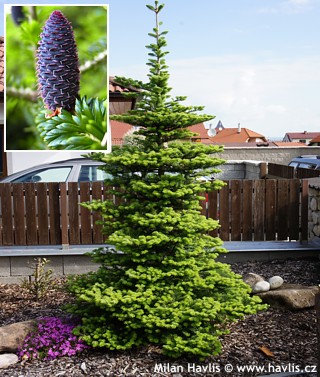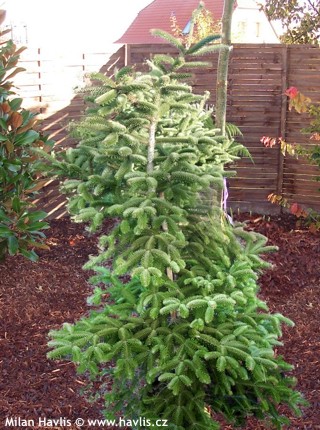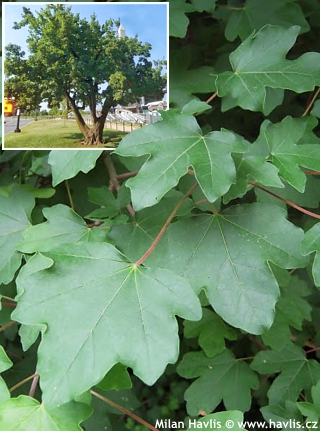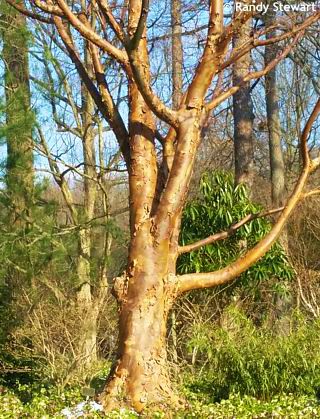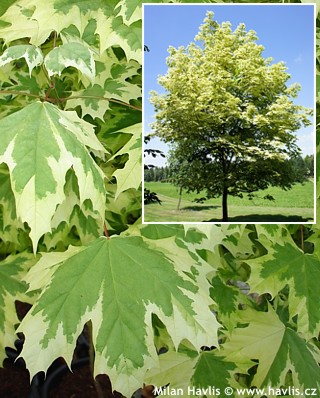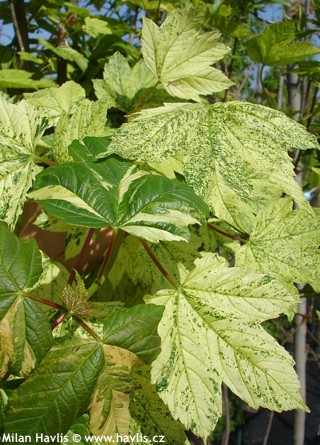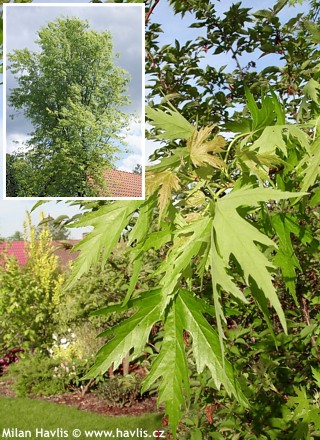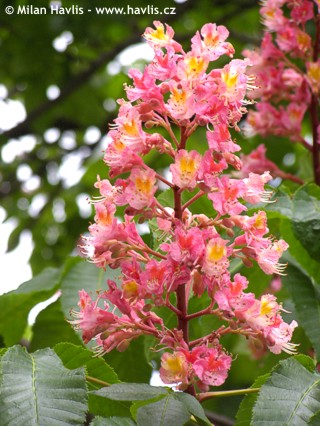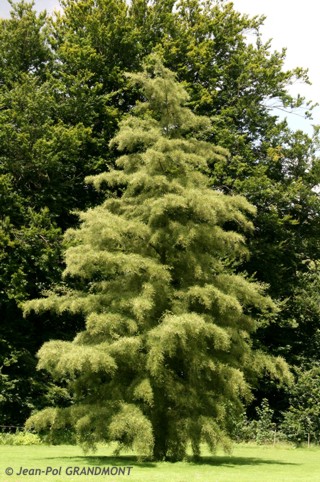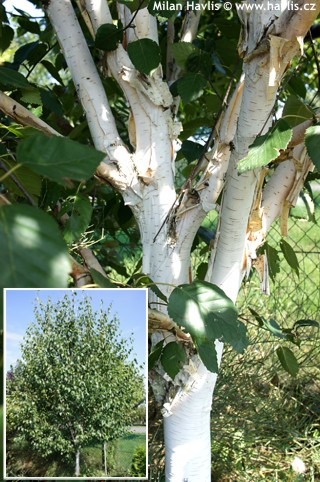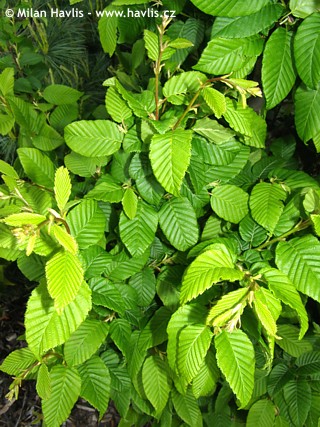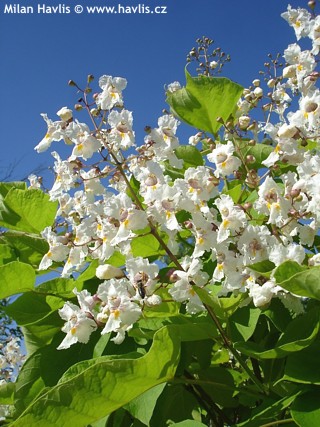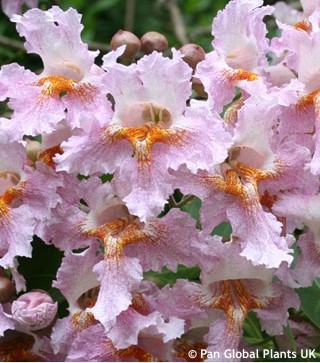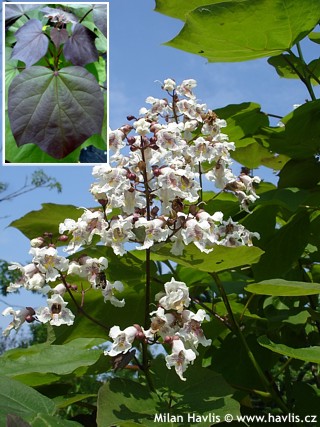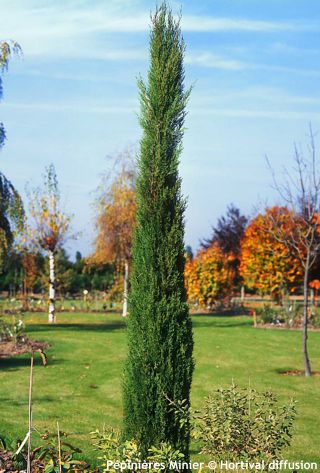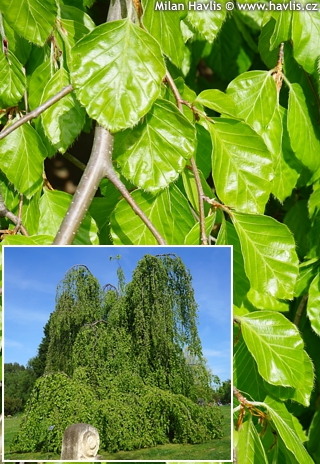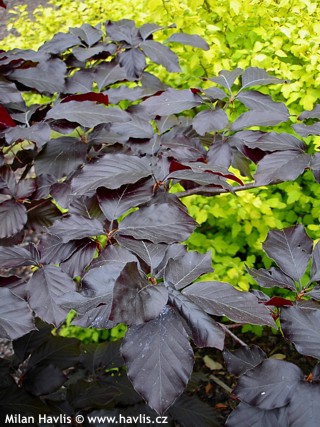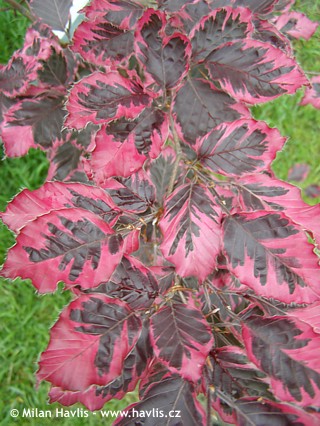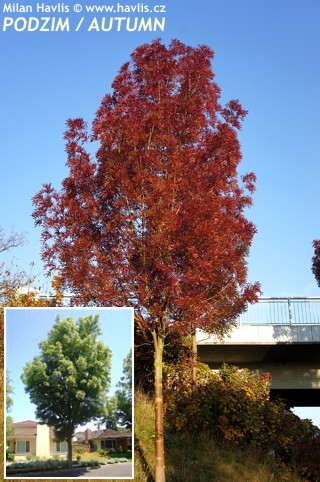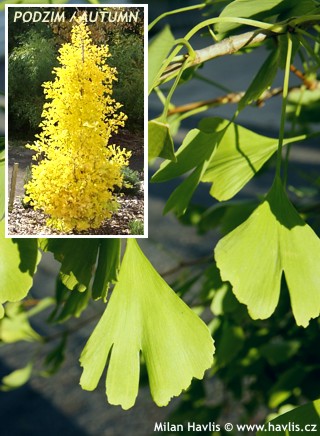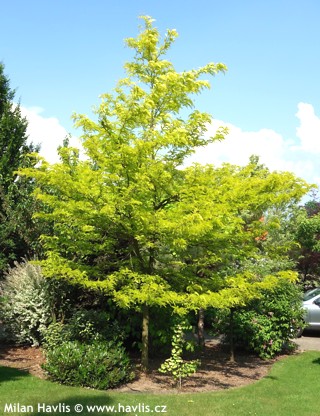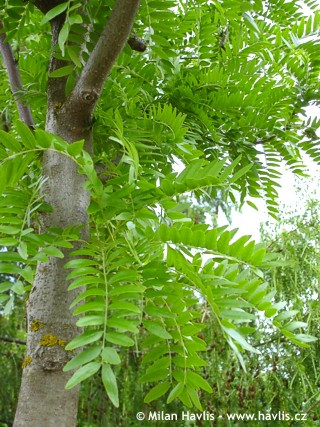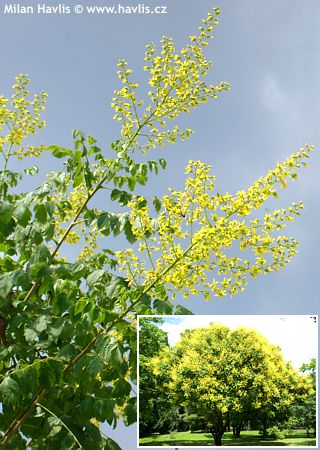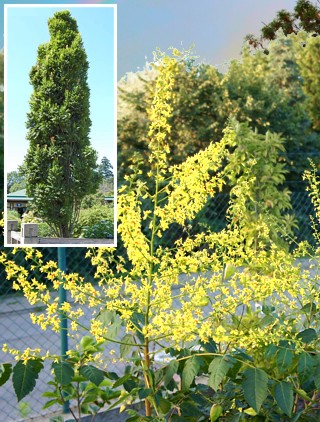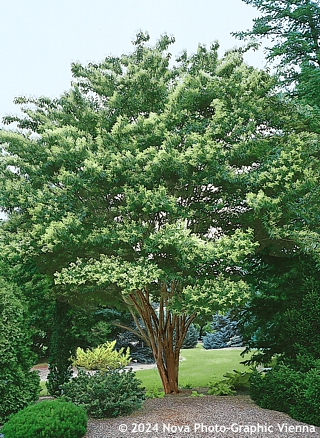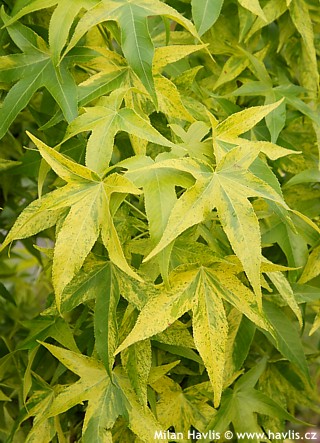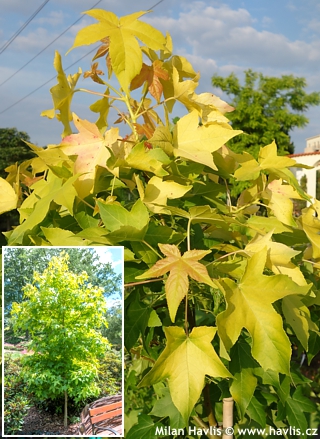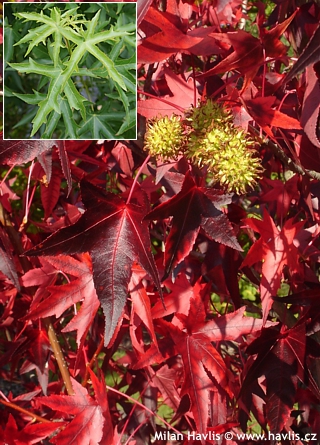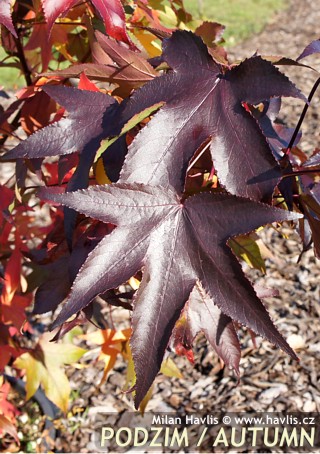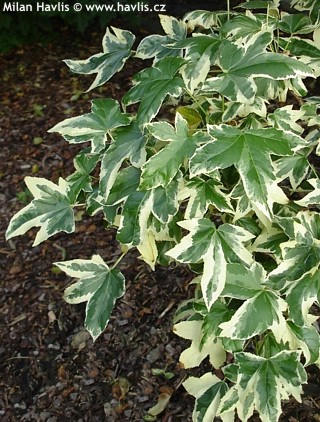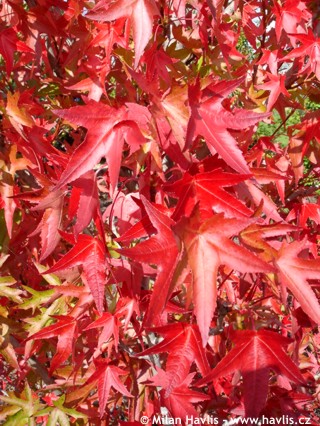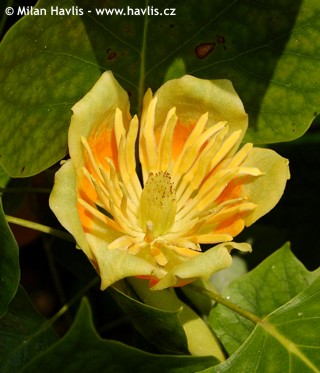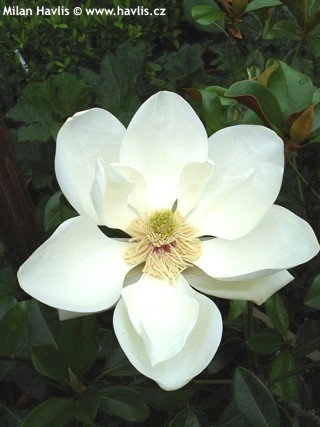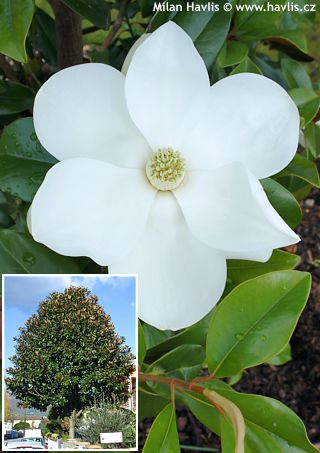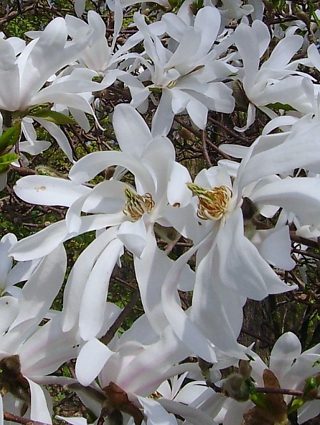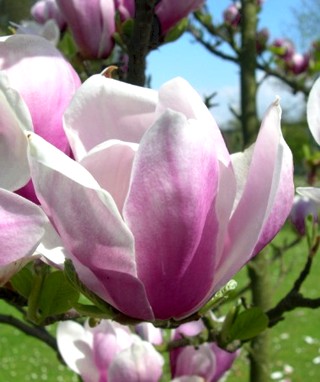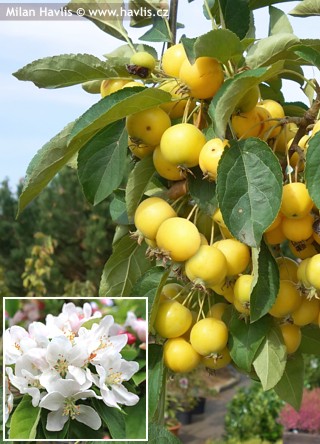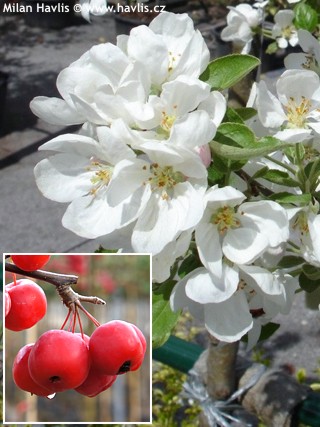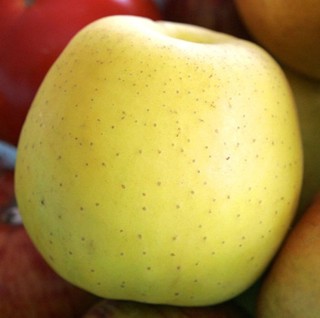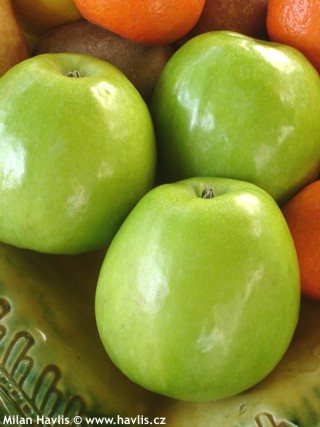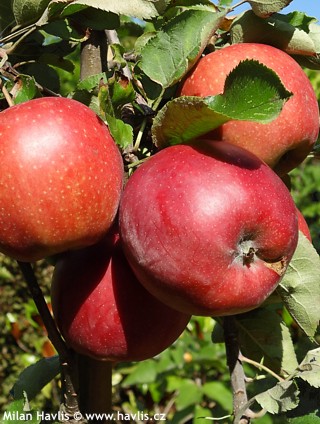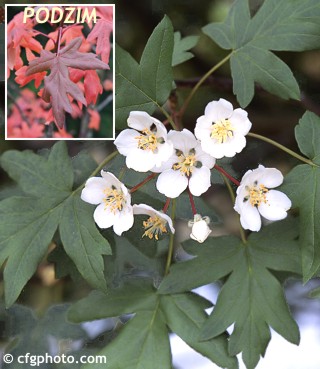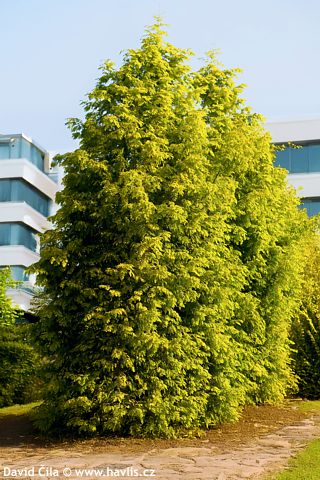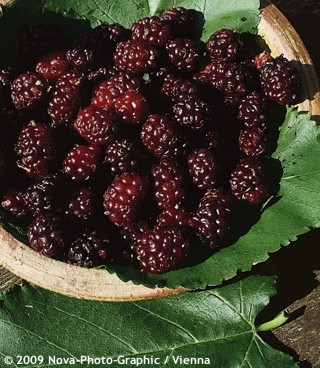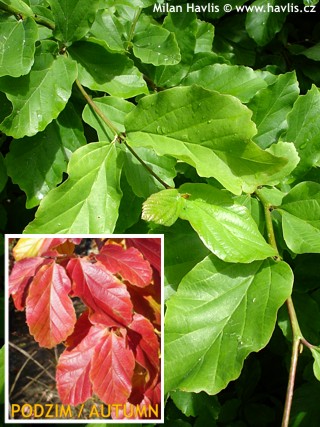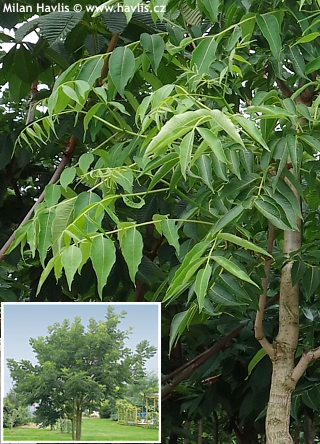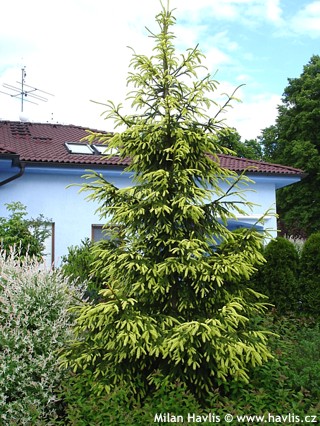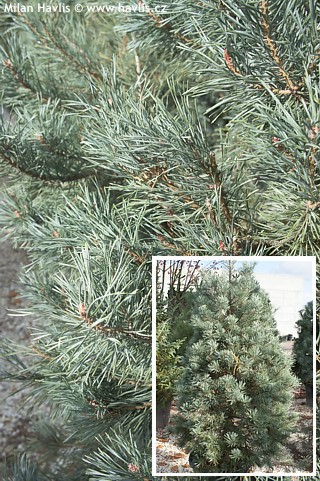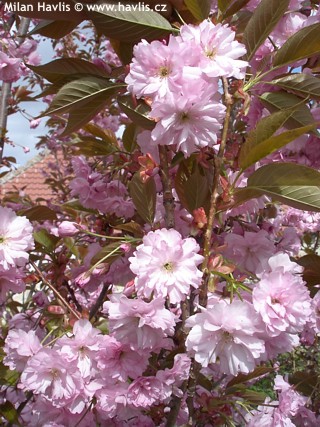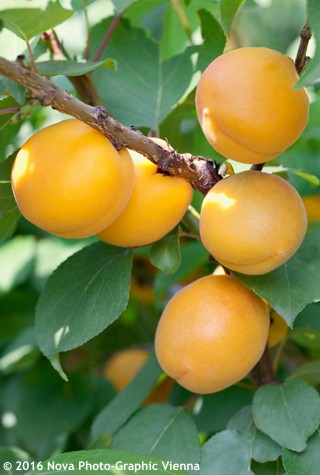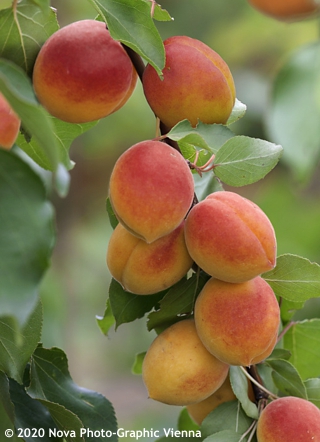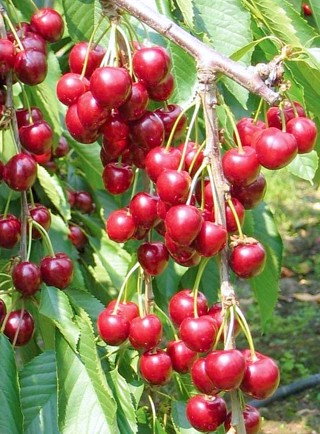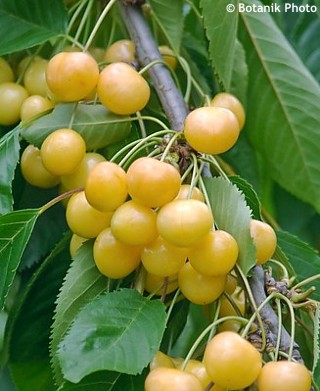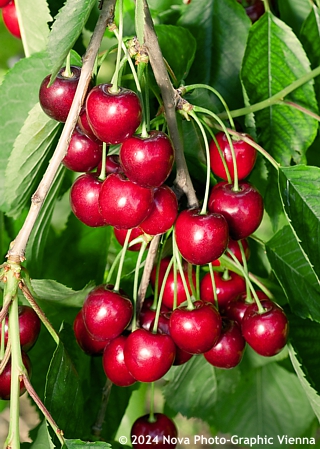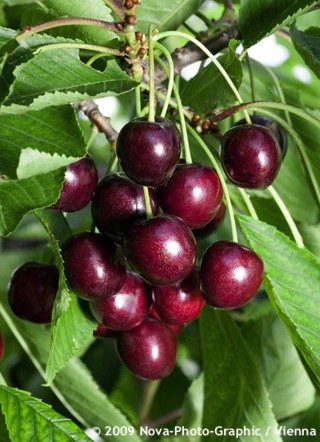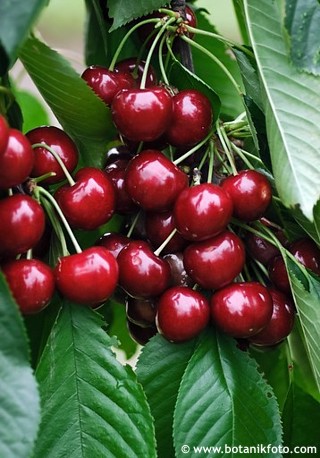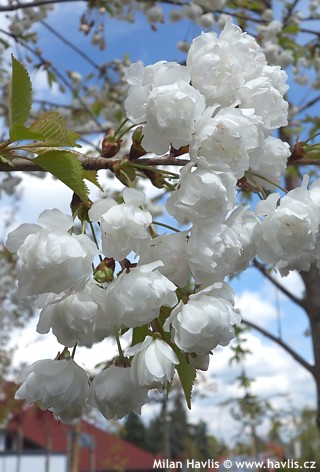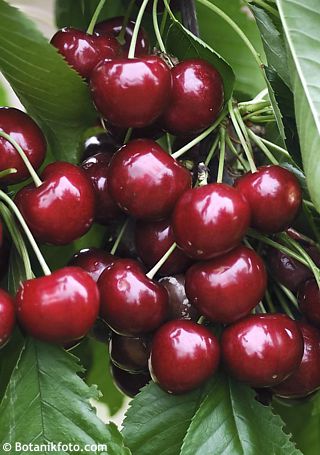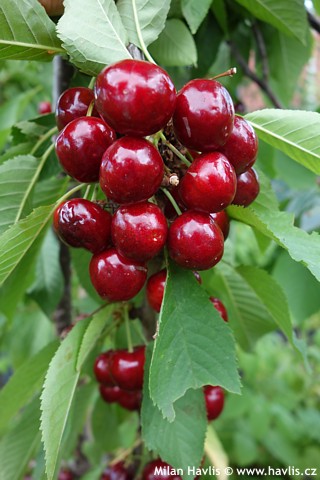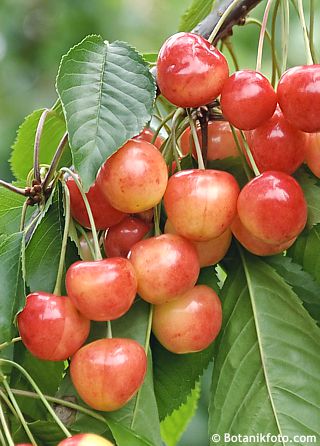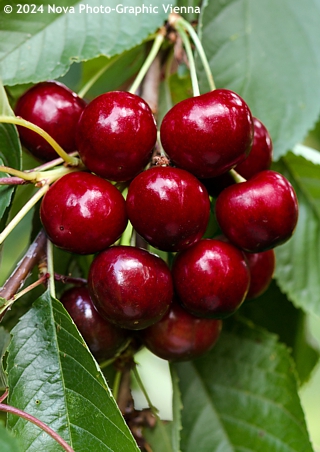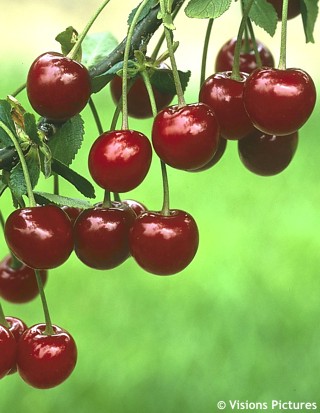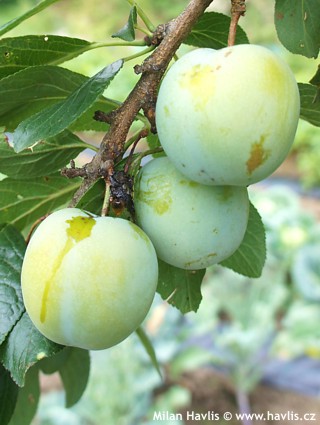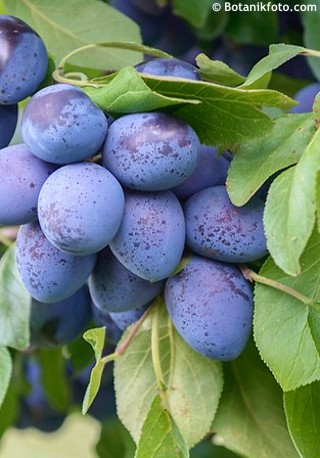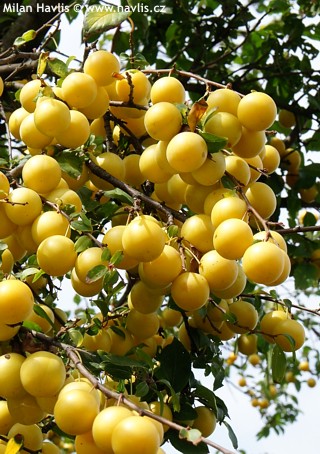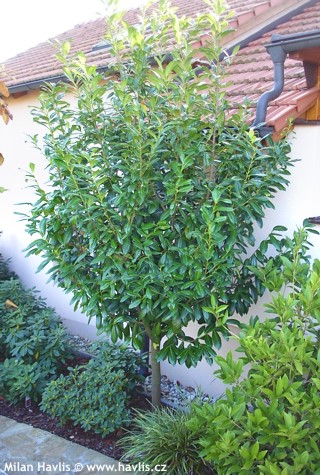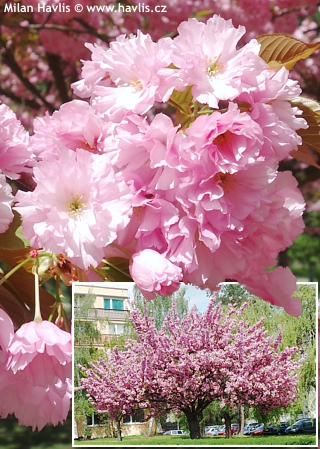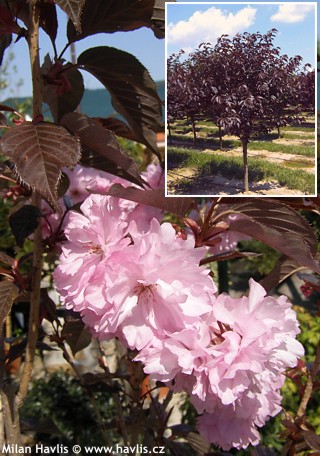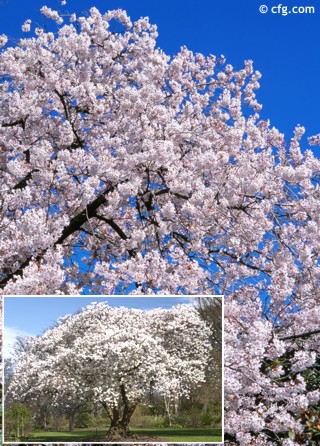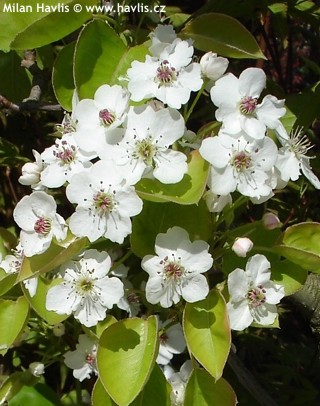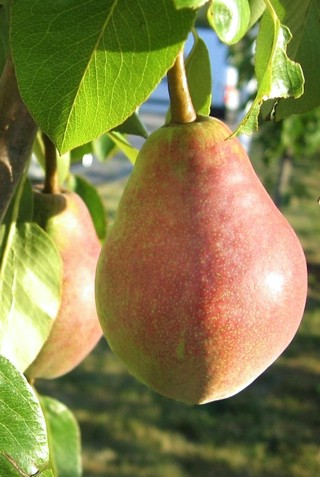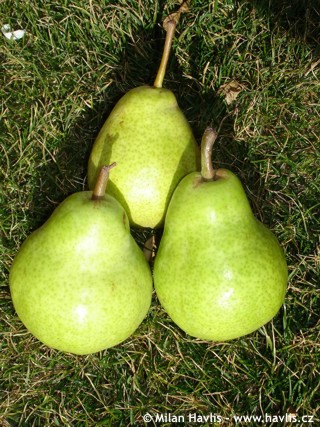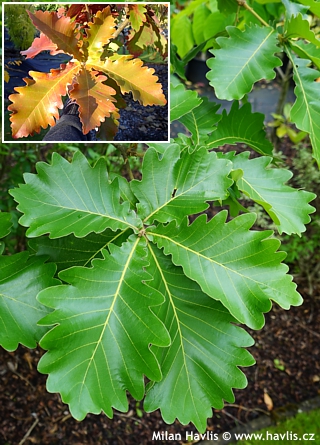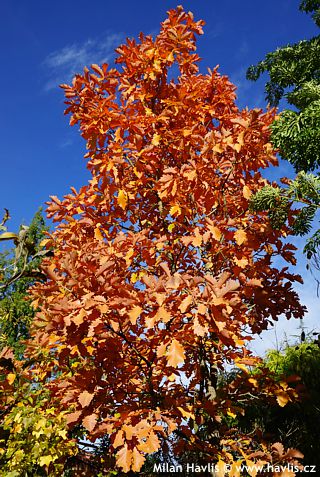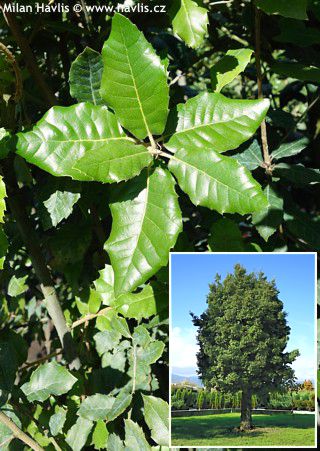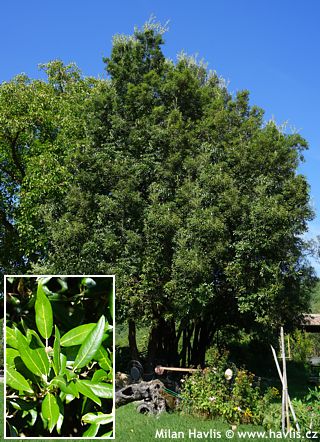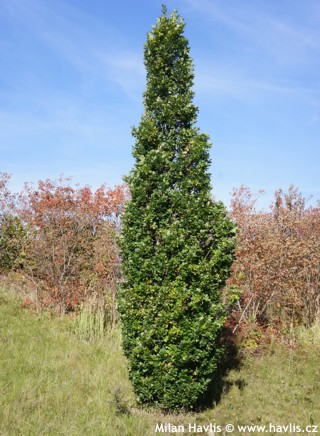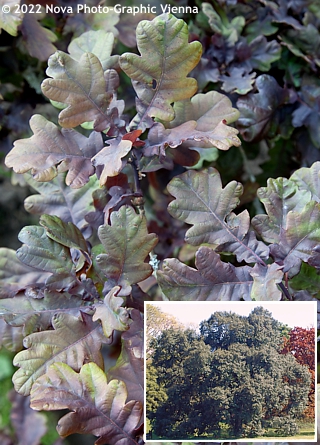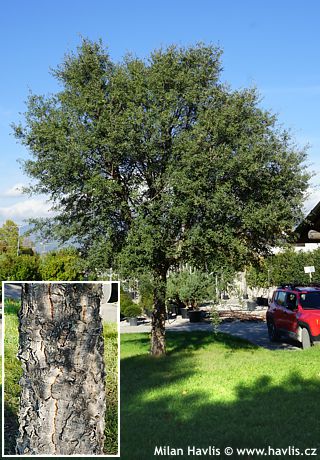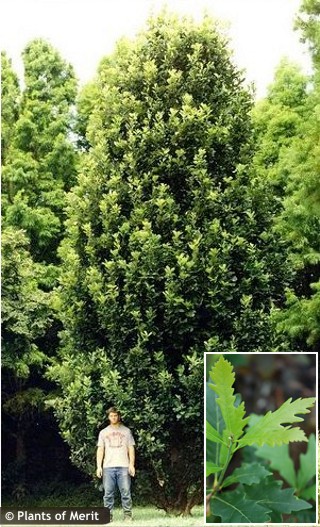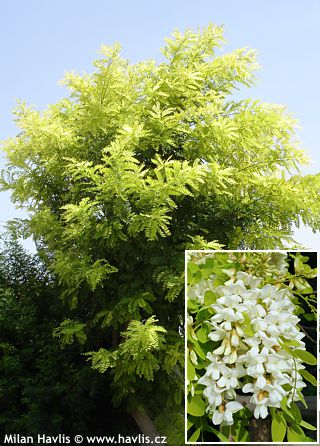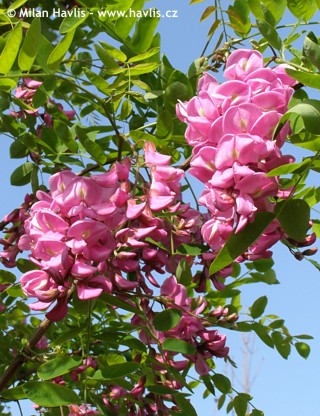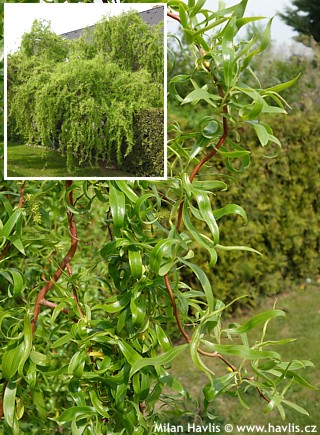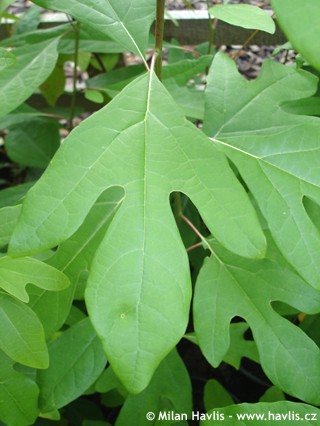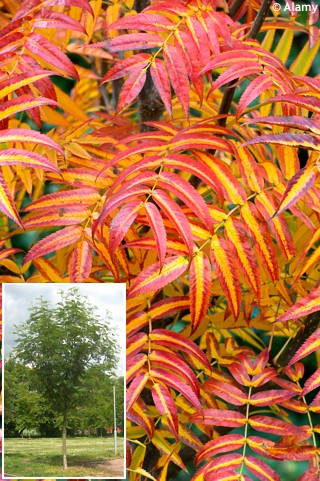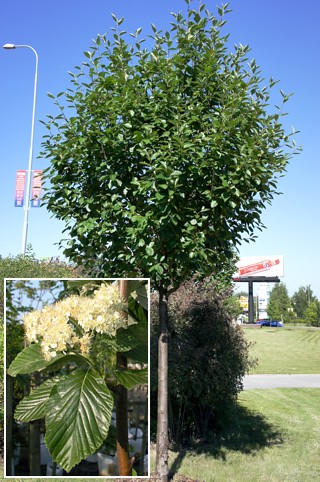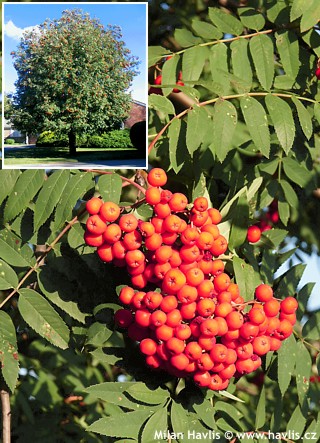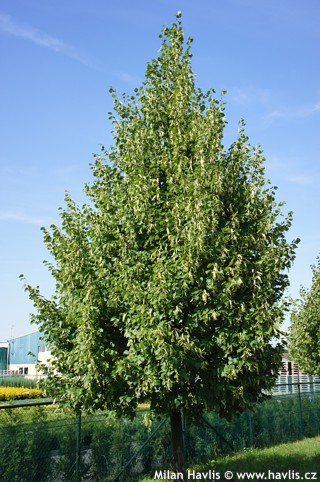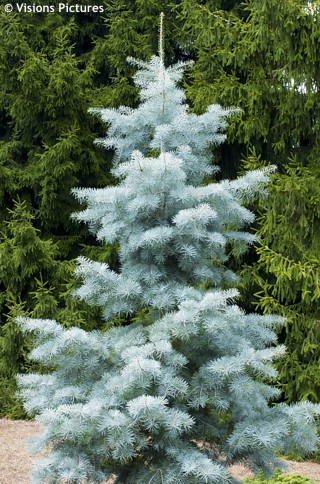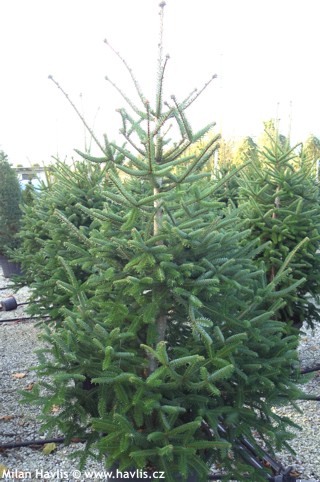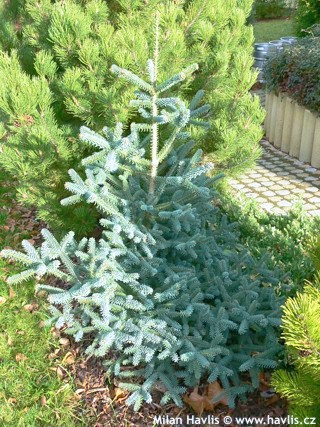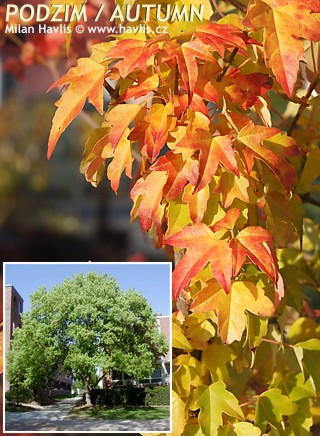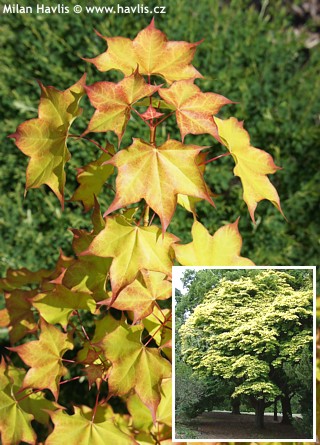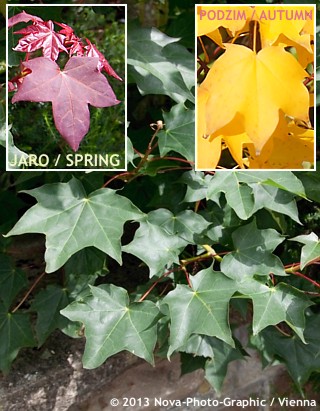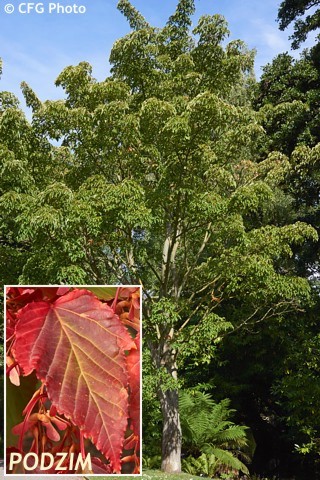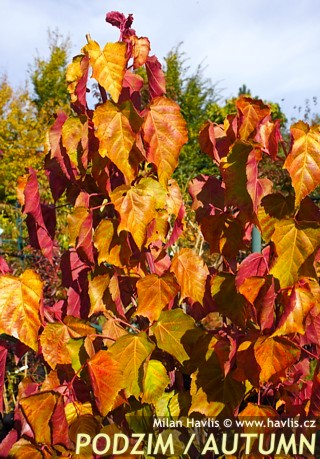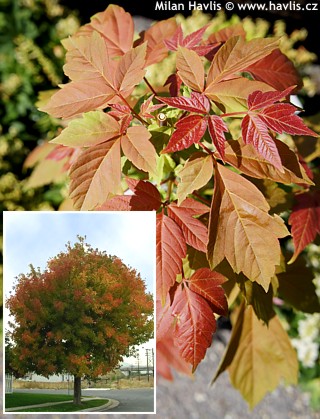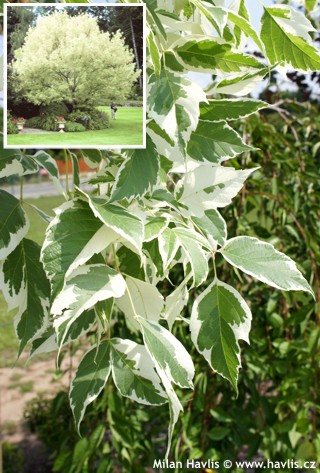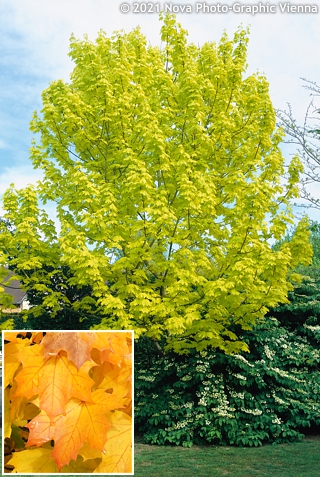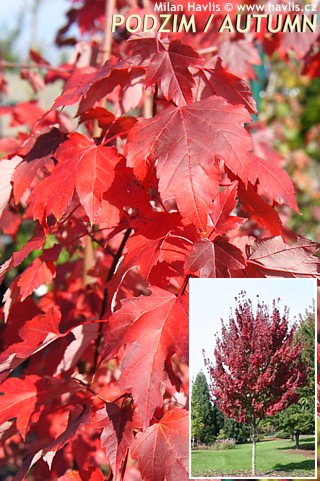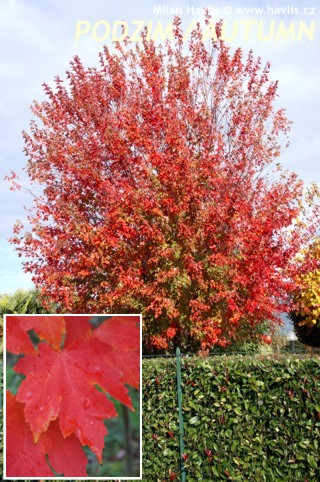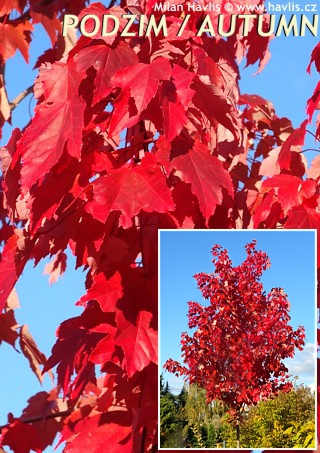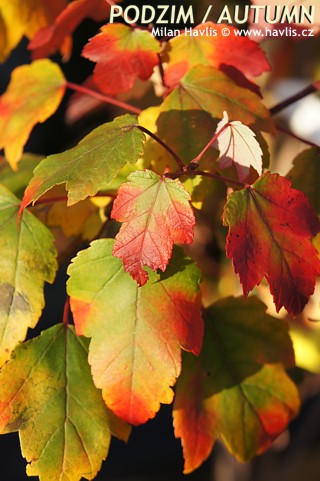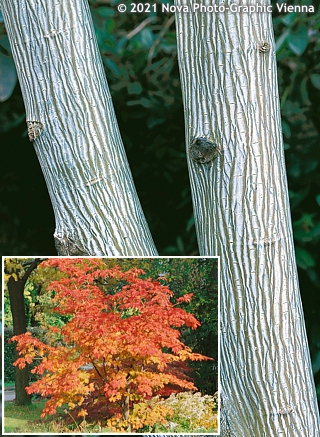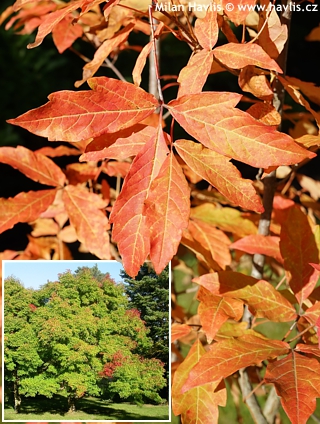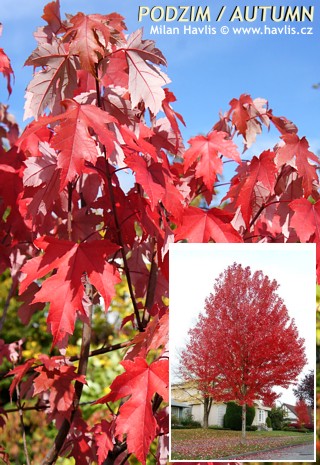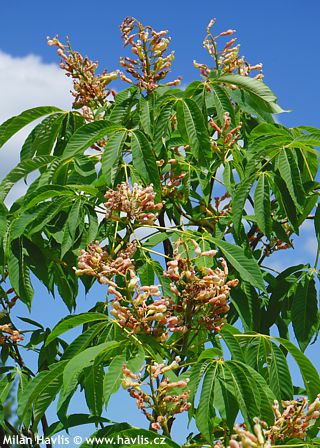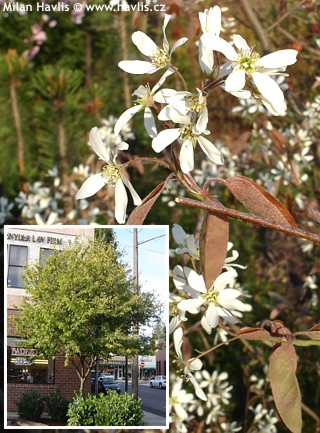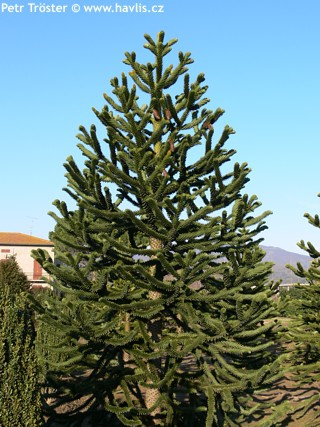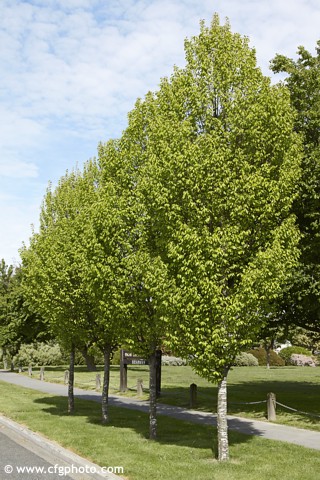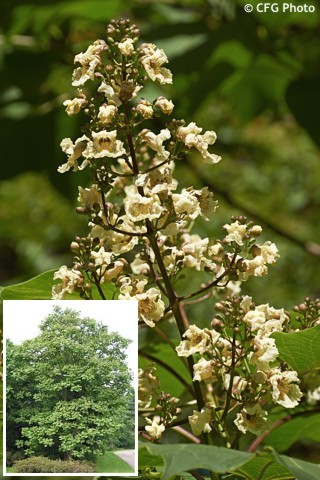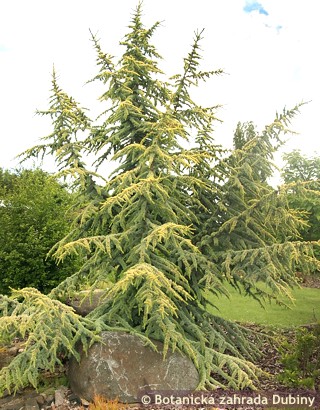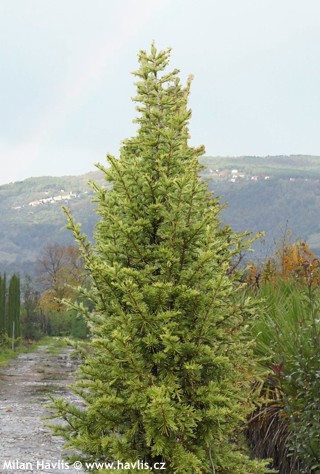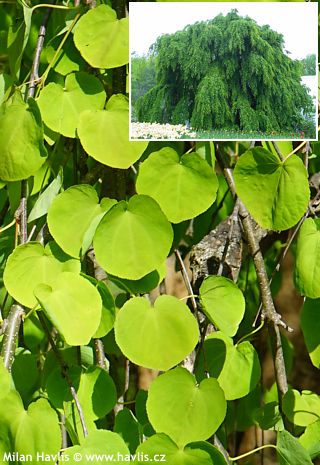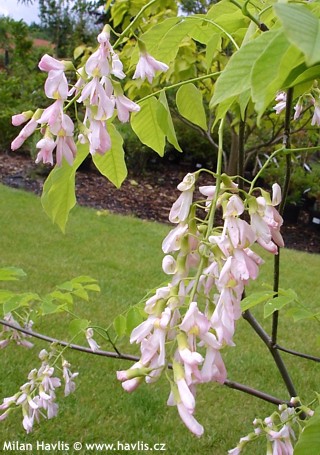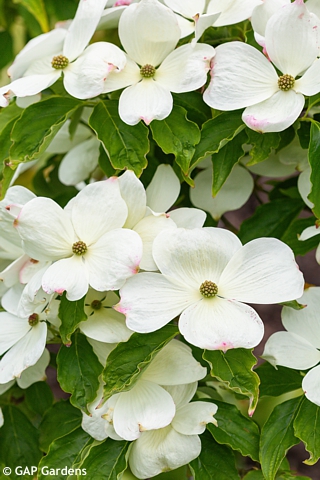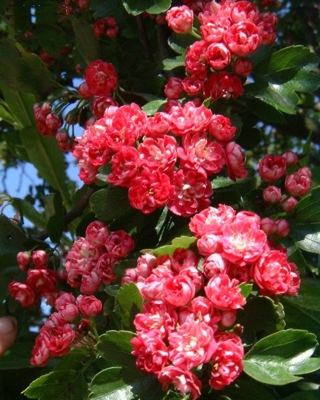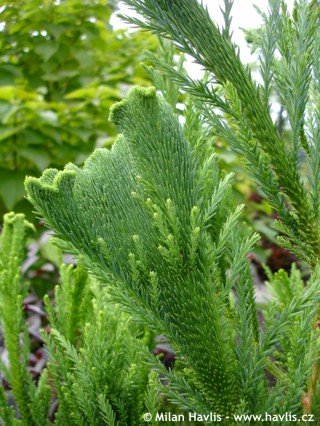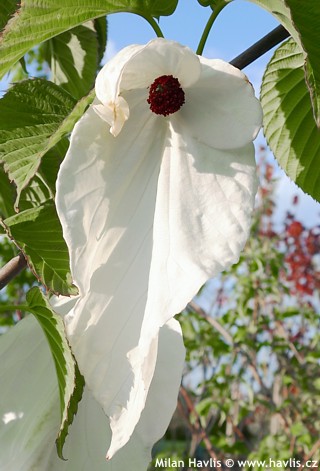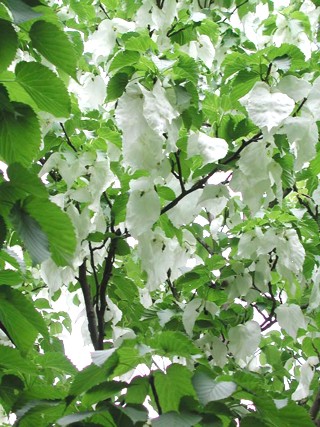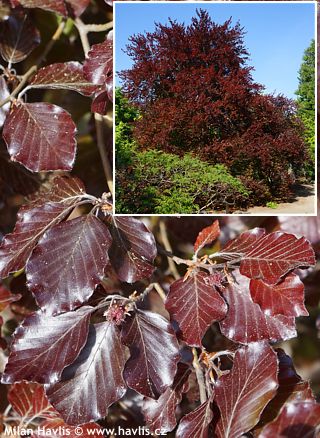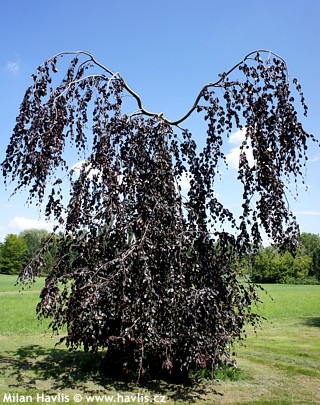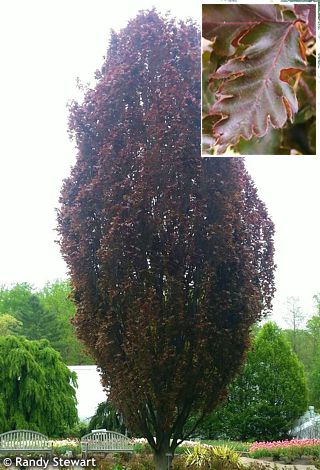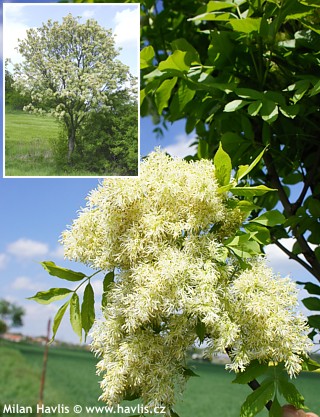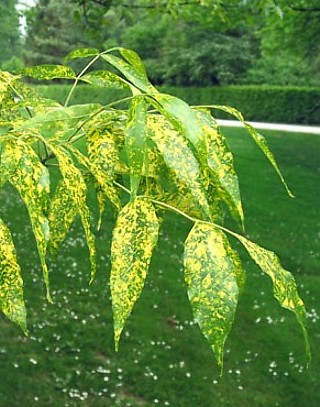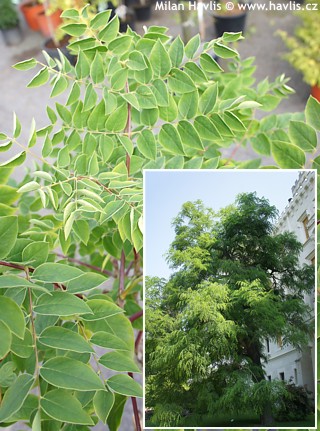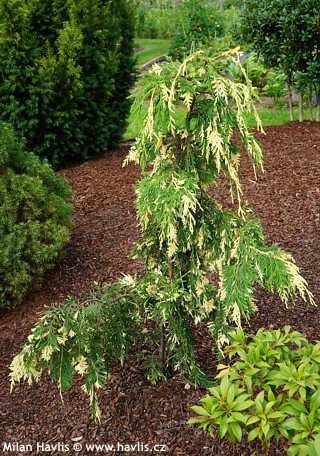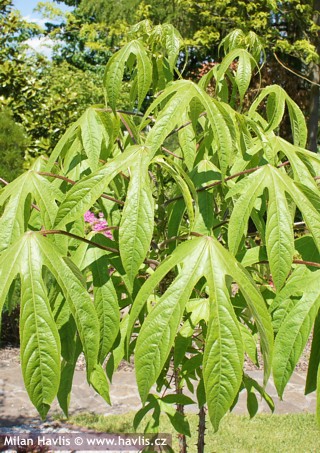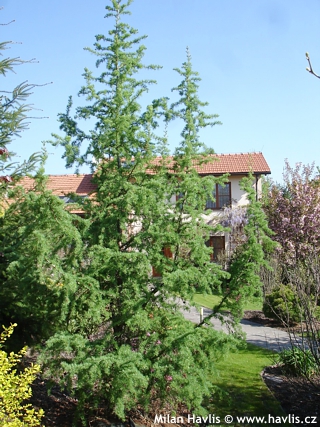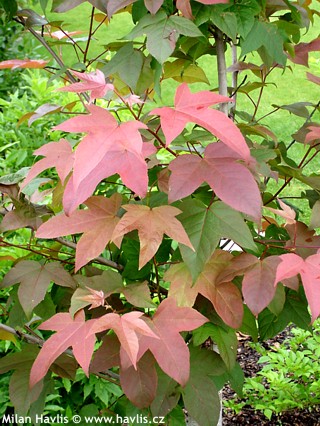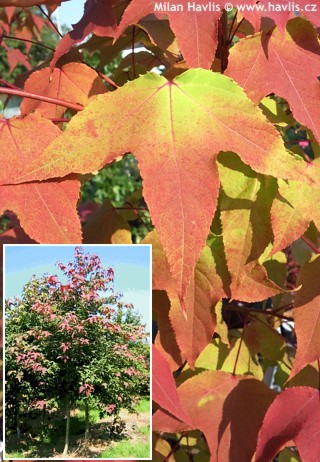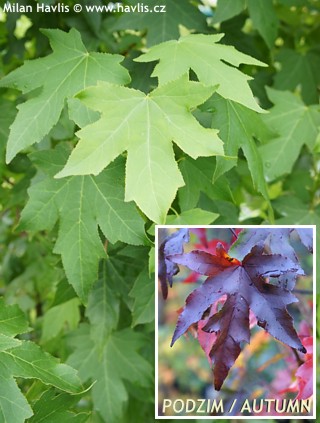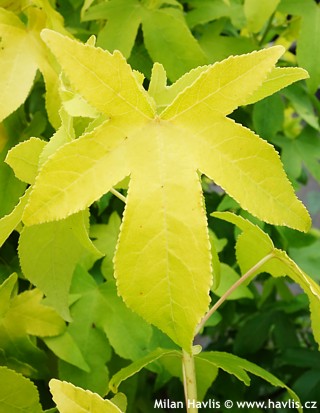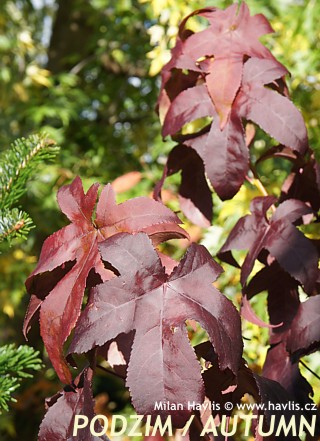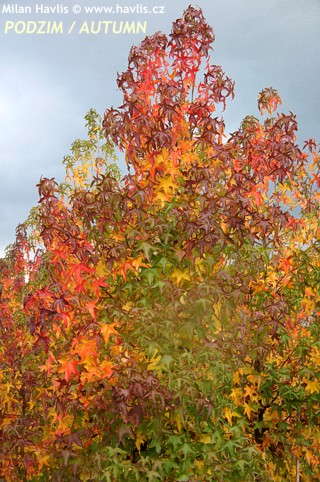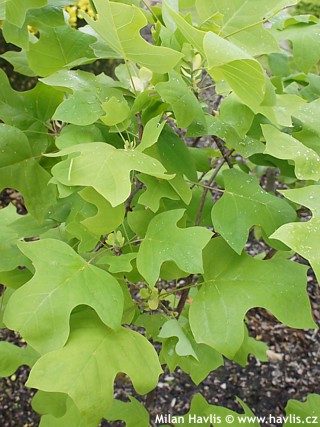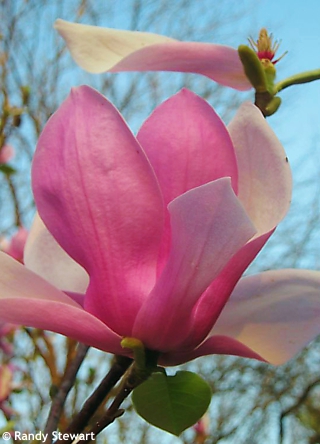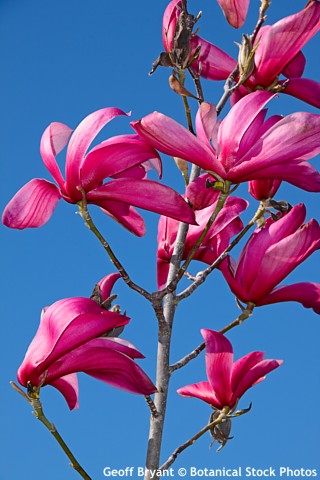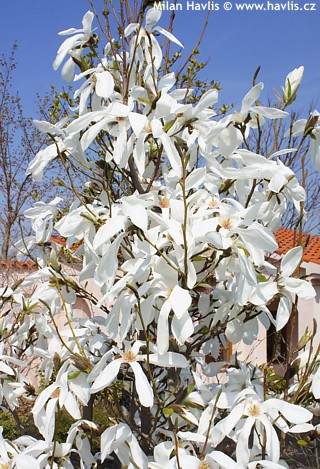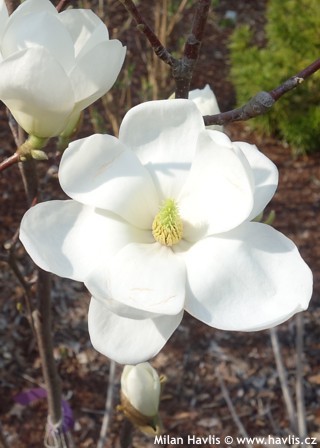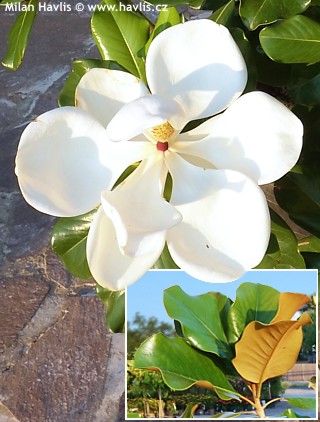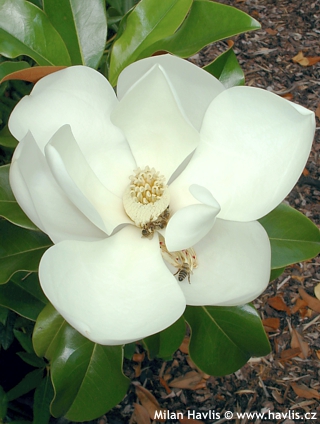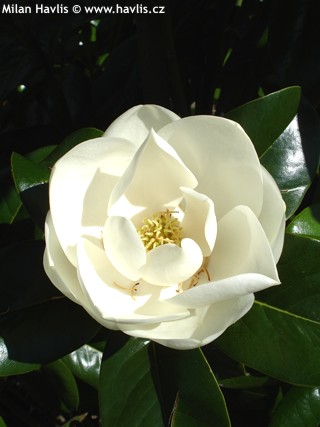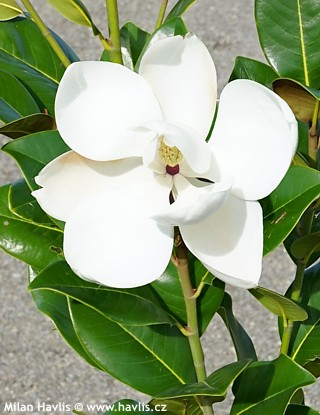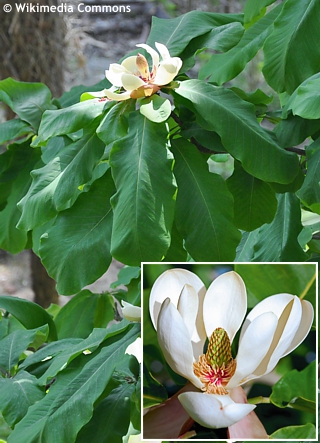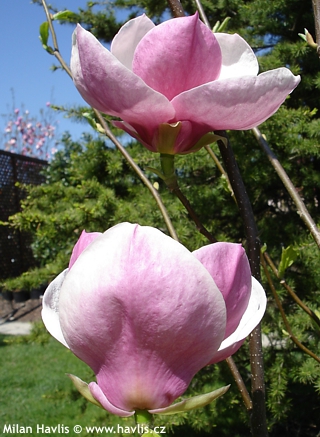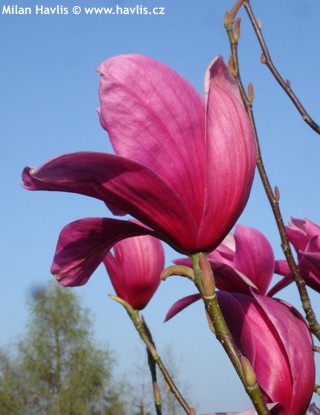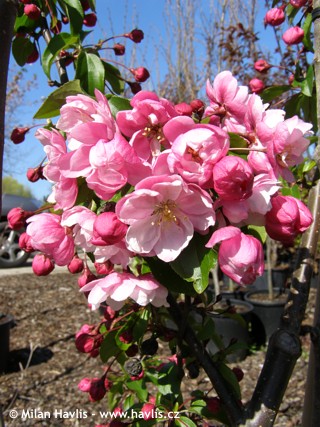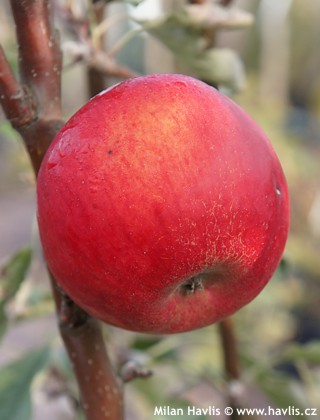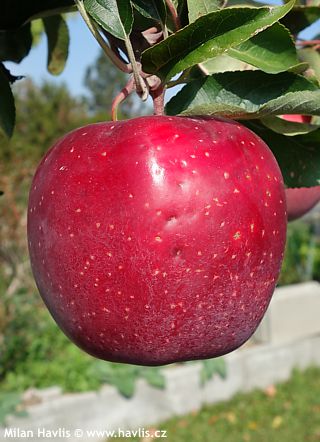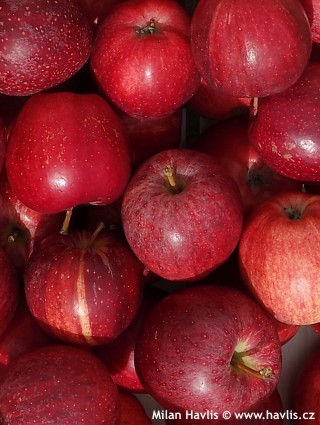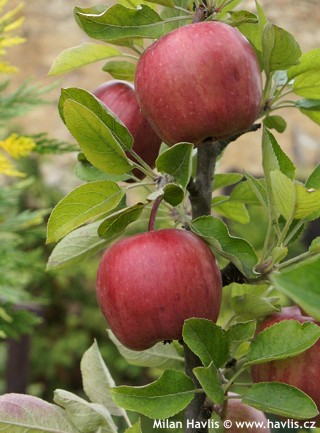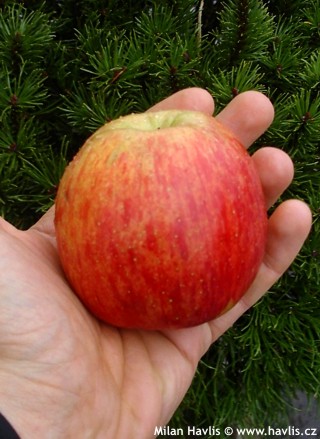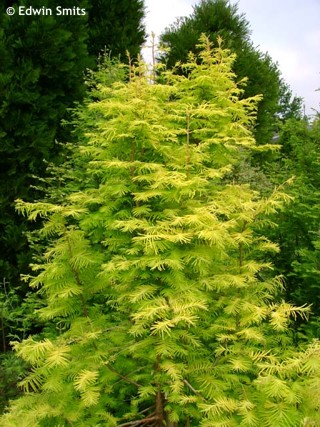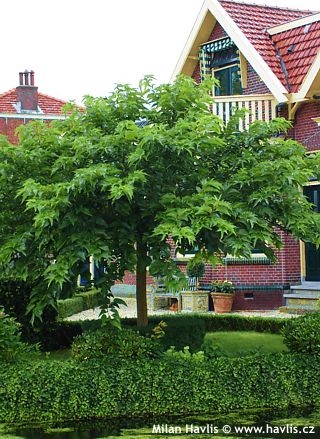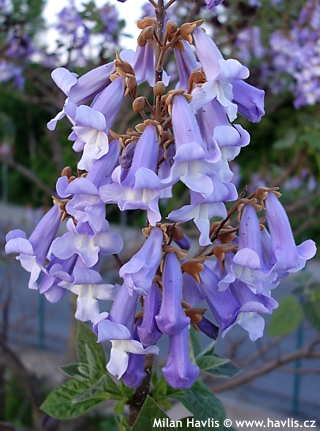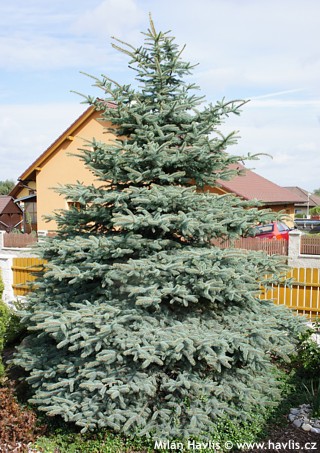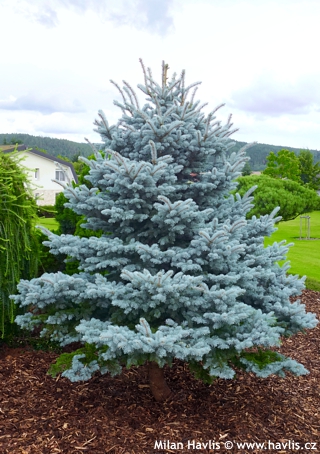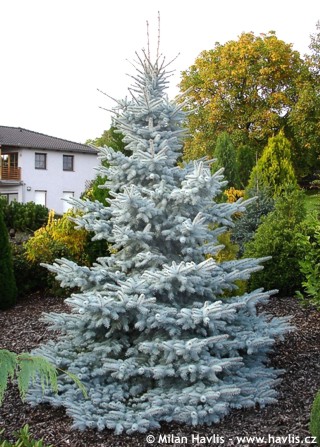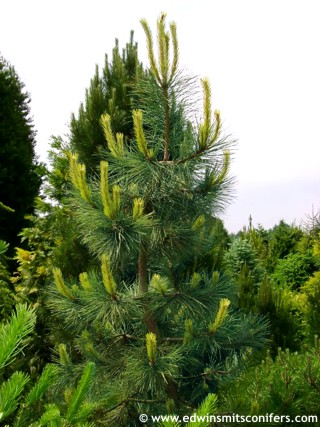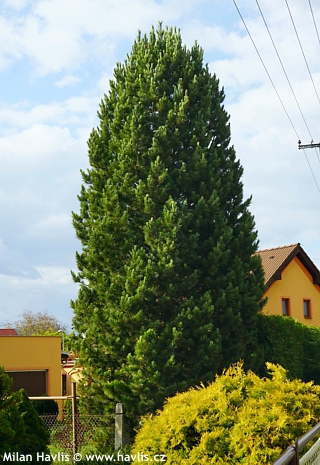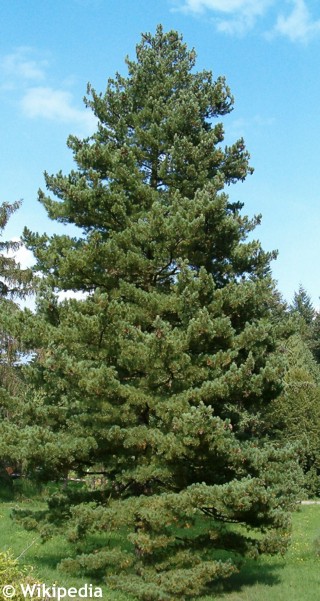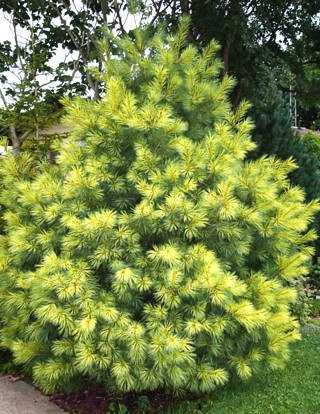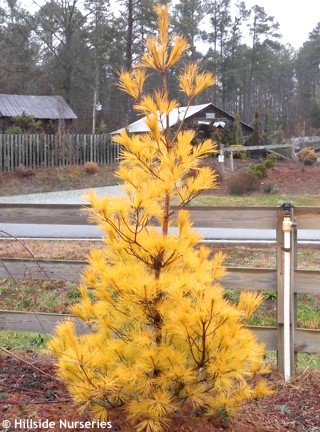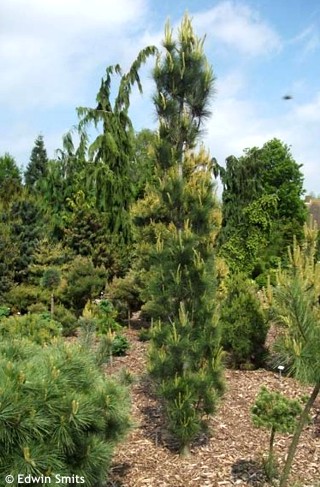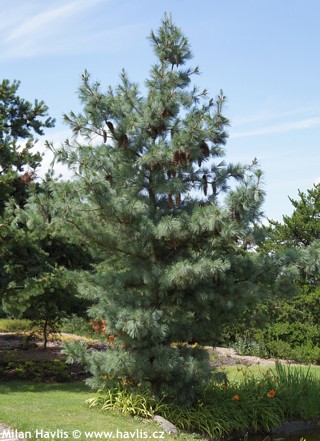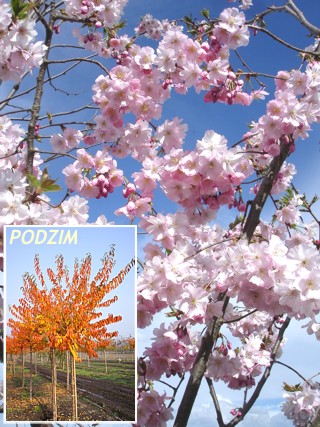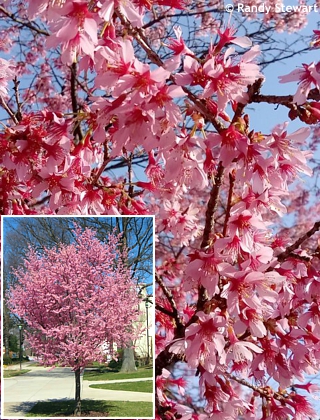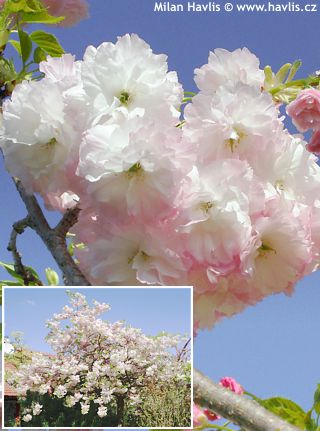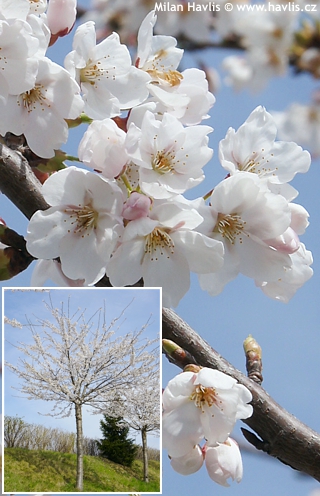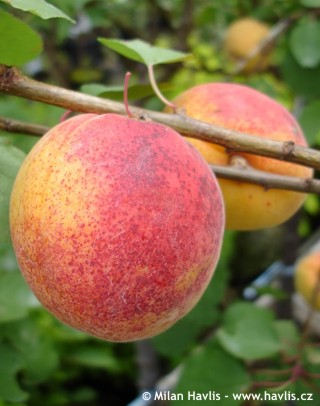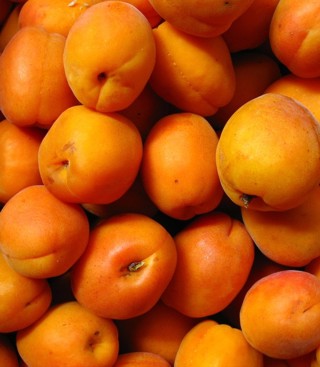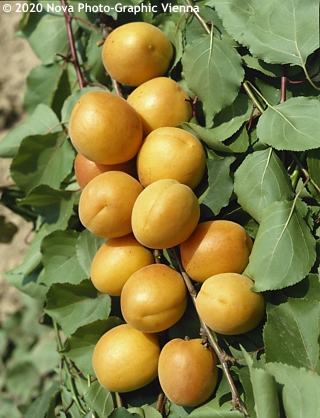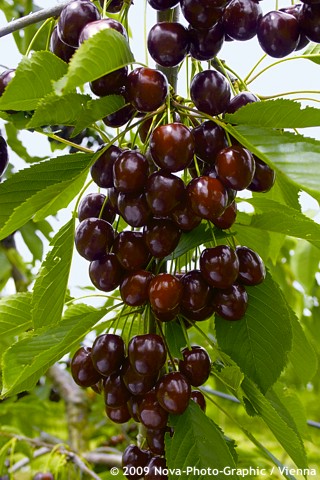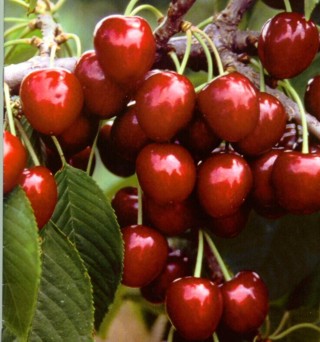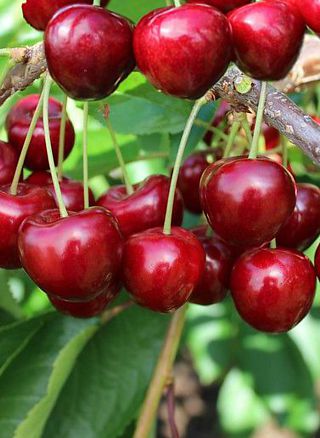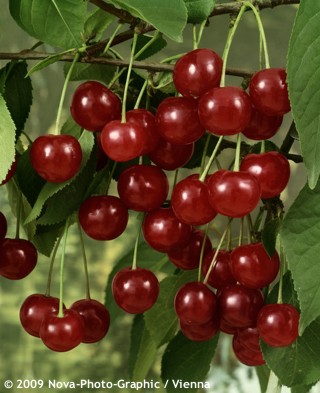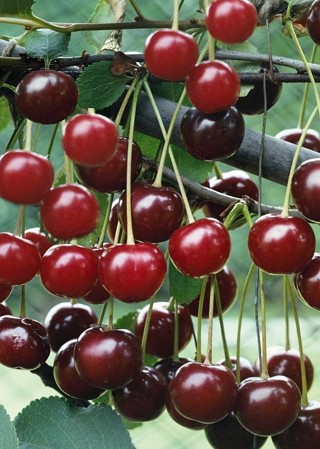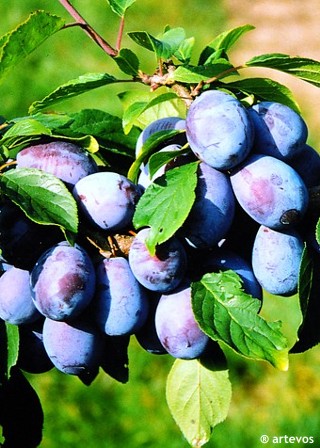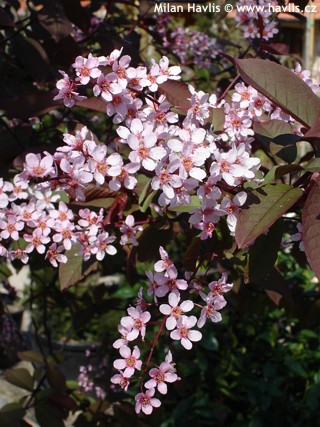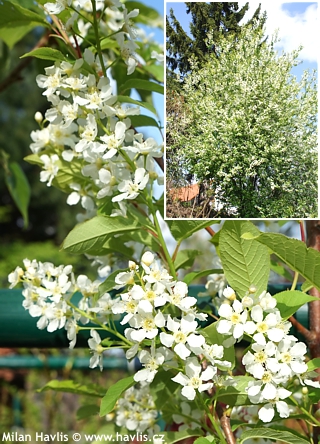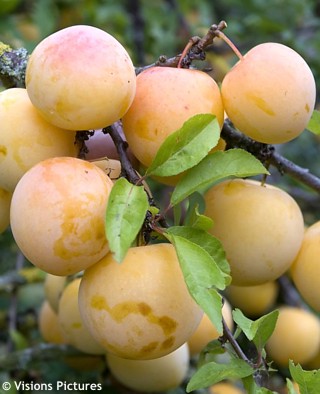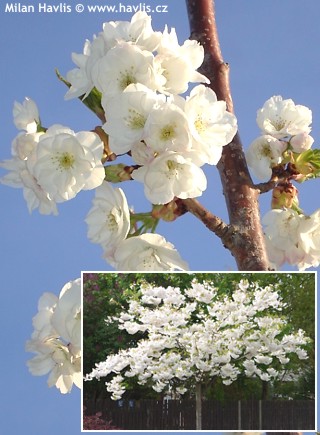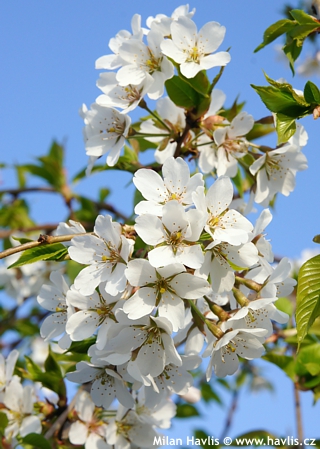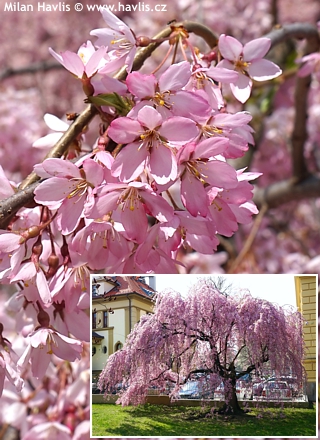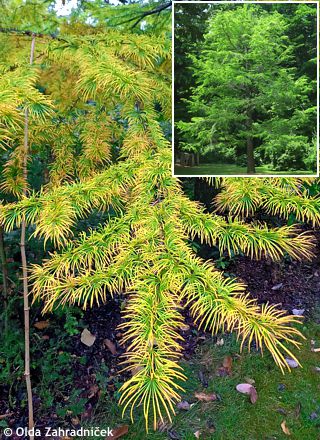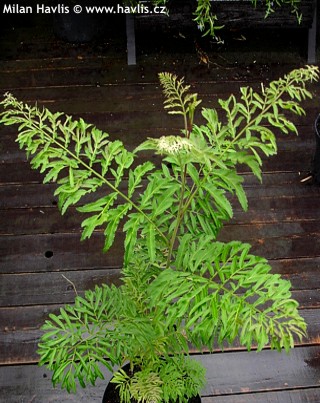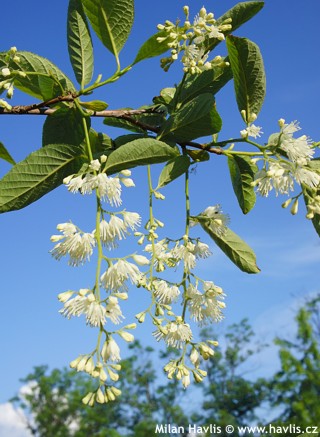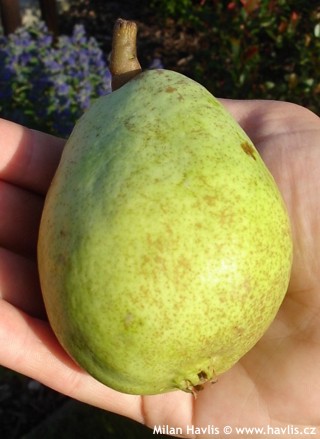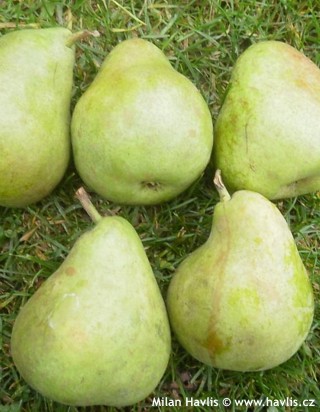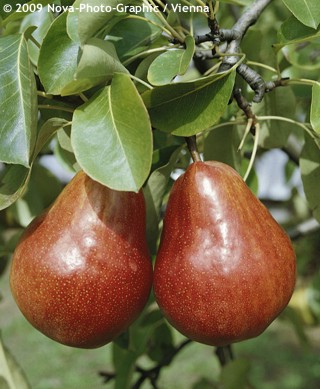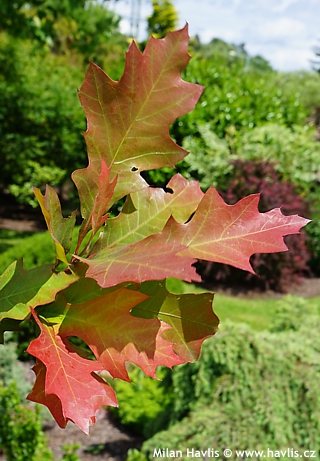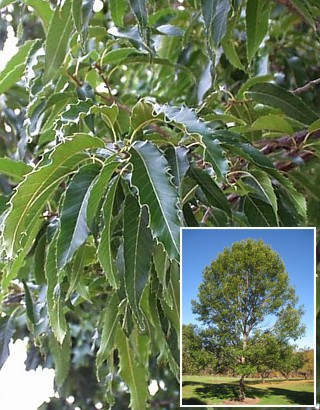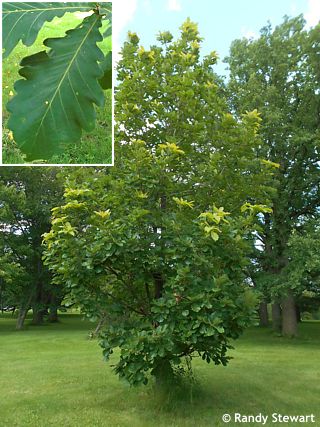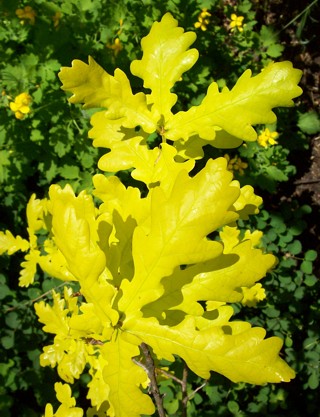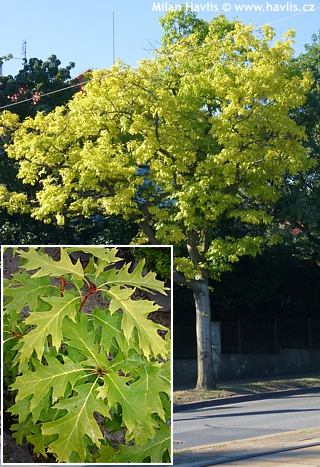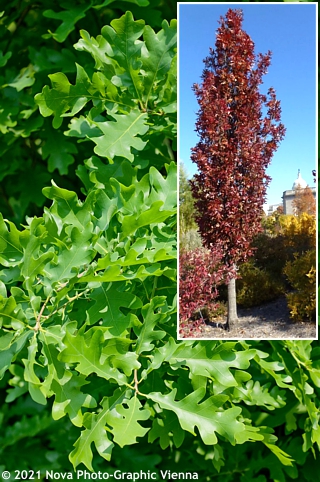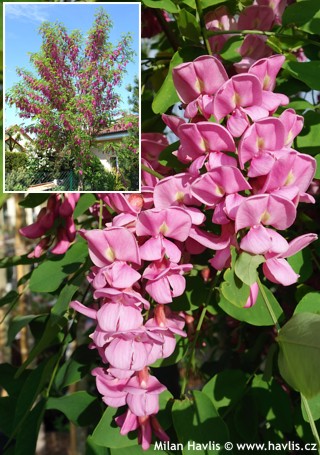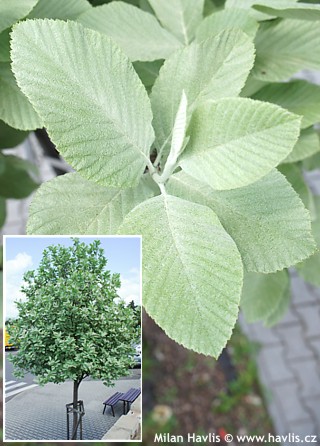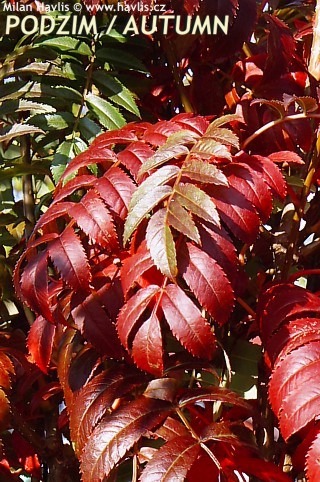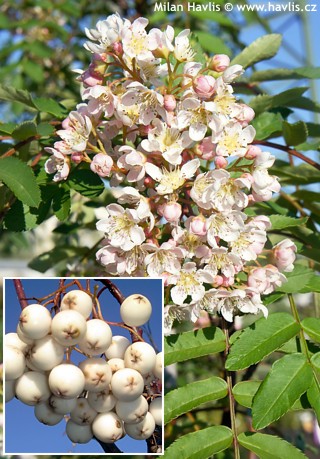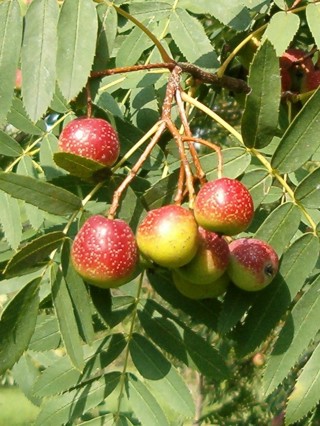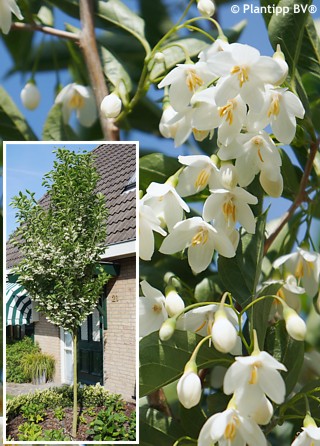CURRENTLY IN STOCK:
One of the most popular conifers for small and mid-sized gardens is this Korean fir. It has short, glossy, dark green needles that are silver on the reverse. Already as a young plant it produces very attractive bluish-purple cones.
It is slow growing, the tree shape is very regular, pyramidal, no ...

3 - 6m

1,5 - 2,5m

full sun

5 (down to -29°C)

for zone 5+6

for zone 7
Algerian fir is a beautiful conifer from North Africa (Algiers, Morocco) and is widely cultivated in South Europe (the Mediterranean). It is very tolerant to drought, heat, and poor soil but very sensitive to pollution and long-lasting frost under -23°C.
The needles are short and stiff, and densely ...

6 - 15m

2 - 4m

full to partial sun

7 (down to -23°C)

for zone 5+6

for zone 7
Field maple (and its varieties) is one of the most frequently planted trees in Czech urban landscapes. It is of European origin and has earned its success thanks to its high tolerance to all kinds of weather conditions as well as those brought upon by humans, and longevity. It is rated a medium-tall ...

6 - 10m

6 - 10m

full to partial sun

5 (down to -29°C)

for zone 5+6

for zone 7
Some trees are admired for other features than just flowers or foliage. There are many of us who easily fall head over heels in love with a picturesque bark like that on paperbark maple from China. It peels off in thin, almost paper-like shavings even on young plants which makes it one of the most s ...

5 - 7m

3 - 4m

full sun

4 (down to -34°C)

for zone 5+6

for zone 7
Drummondii is a variegated form of Norway maple, only some 100 years old. The decades from its birth proved its popularity which is still very high. The leaves are beautifully creamy white variegated at the margins, with bright green centres.
Apart from pruning at the end of winter, should you wis ...

5 - 8m

2 - 3m

semi-shade / partial sun

4 (down to -34°C)

for zone 5+6

for zone 7
Sycamore trees are our native plants and their various cultivars find their use perhaps in all types and sizes of gardens. If your garden is not very big and you would still like a maple of this kind try this one. It was first introduced at the end of 19th century and has been a sought after gem eve ...

6 - 10m

3 - 5m

full sun

4 (down to -34°C)

for zone 5+6

for zone 7
This silver maple will draw your attention to the deeply cut leaves which resemble Japanese dissectum maples. The name silver describes the underneath of the leaves which are silvery gray and glitter in the wind.
In too fertile soil the branches can grow as much as 1 meter within one year and can ...

15 - 20m

6 - 12m

full to partial sun

4 (down to -34°C)

for zone 5+6

for zone 7
Red horse chestnut is a fantastic tree which is usually planted in large gardens and parks, and as a street tree. Although, this hybrid grows a little slower (30 cm a year) making some 6x4m when 20 years old.
Briotti is a popular variety with big, upright panicles of deep pink flowers with a distin ...

V

6 - 15m

6 - 10m

full to partial sun

5 (down to -29°C)

for zone 5+6

for zone 7
Common alder is a European native plant. There are varieties, however, that are very uncommon and I am not afraid to say exquisite. Such as this variety: Imperialis.
Imperialis alder bears mid-green, deciduous, very deeply cut, 4-8 cm long, narrow leaves that look like tiny witches’ brooms. B ...

5 - 8m

2 - 4m

full sun

3 (down to -40°C)

for zone 5+6

for zone 7
ROYAL FROST is a trade name of a very attractive birch variety. It is a hybrid between betula populifolia „Whitespire“ and betula „Crimson Frost“. Deciduous leaves are diamond-shaped, serrated at margins, rich burgundy red in summer, and crimson red, purple, orange and yellow ...

8 - 12m

3 - 5m

full sun

3 (down to -40°C)

for zone 5+6

for zone 7
Birches are typical trees of Eastern Europe and Asia, as well as some northern regions. Himalayan birch grows slower and not as tall as white birch so you can try one in your garden, too.
Doorenboos is naturally a multi-stemmed shrubby tree with thick trunks. They are highly attractive for the cre ...

7 - 10m

4 - 6m

full to partial sun

5 (down to -29°C)

for zone 5+6

for zone 7
One of the original trees found in natural woodlands of Europe is hornbeam. Varieties of this deciduous tree are becoming more and more popular in gardens, too.
Fastigiata, syn. “Pyramidalis” is an elegant, slow growing hornbeam with columnar habit and branches growing strictly upright ...

8 - 12m

2 - 4m

full to partial sun

4 (down to -34°C)

for zone 5+6

for zone 7
Aurea variey bears huge, tropical looking, heart shaped leaves (20-25 cm large), of bright yellow-green colour. They are slightly hairy like suede, pleasant to touch. They have interesting scent similar to tobacco leaves that allegedly repels insects.
Beginning of summer 20-30 cm tall upright pani ...

VI - VII

2 - 8m

2 - 6m

full sun

5 (down to -29°C)

for zone 5+6

for zone 7
Farges catalpa is a rare plant that was found by western dendrologists in China in early 20th century. Forma ducluxii is a unique plant that deserves undivided attention when in full bloom. Its flowers are formed in upright panicles, larger than on Northern catalpa, lilac to pink in colour with cons ...

VI - VII

2 - 8m

2 - 6m

full sun

5b (down to -27°C)

for zone 5+6

for zone 7
Do you like a tall tree but are afraid it would be too big for your small garden? Well, if you have enough will to prune it every one or two years you can always control its size provided it is not an ash type tree growing about 1 m every year. Thus you can enhance the look of your garden with somet ...

VI - VII

3 - 9m

3 - 6m

full sun

5 (down to -29°C)

for zone 5+6

for zone 7
Yellow wood is a rare, though fully hardy tree that deserves more attention. Its origin is not clear and definite. Usually this small tree or large shrub is connected with Kentucky, USA, but many plants grow freely on limestone cliffs on China and Japan. It used to be a jewel of royal gardens and ar ...

VII - VII

5 - 10m

full sun

5 (down to -29°C)

for zone 5+6

for zone 7
Carrièrei hawthorn differs from the original hybrid by a much more profuse blooming and therefore a magnificent display of fruit in autumn. It is a small to mid-sized tree whose leaves, though deciduous, remain on the tree much longer than on other deciduous trees. So no wonder that many garden ...

V - VI

3 - 5m

2 - 4m

full to partial sun

4 (down to -34°C)

for zone 5+6

for zone 7
Garda is a selected form of Tuscan cypress found in the Italian Lake Garda region. It naturally forms slender, evergreen columns, whose dense branches are covered with dark green, scale-like needles that do not lose their colour even in winter. The branches are shorter, firmly attached to the trunk, ...

6 - 12m

1 - 2m

full sun

8 (down to -18°C)

for zone 5+6

for zone 7
Pendula is a weeping form of European beech first introduced by George Loddiges in his nursery in London, UK, in 1836. It bears deciduous, 6-10 cm long, broadly elliptic-ovate, glossy leaves that emerge bright green, mature to dark green in summer, and turn yellow and brown shades in autumn. Its wee ...

8 - 20m

5 - 15m

full to partial sun

4 (down to -34°C)

for zone 5+6

for zone 7
Riversii (syn. 'Purpurea Major') is a variety of European beech, a slow growing big tree with deep maroon leaves. They are elliptic-ovate, deciduous, emerge bright burgundy red, maturing to deep purple maroon and deep green inside the crown in summer, and eventually turn copper orange in autumn.
...

15 - 18m

5 - 10m

full sun

4 (down to -34°C)

for zone 5+6

for zone 7
Beech is a reliable and hardy tree of our climate. Variety Purpurea Tricolor has deep burgundy red leaves with pink margins that, upon conditions, can reach the centre of the leaf.
Natural habit is quite airy and thin when young. When mature it reaches well over 10 meters but this happens seldom, ...

3 - 15m

3 - 10m

full sun

4 (down to -34°C)

for zone 5+6

for zone 7
Raywood is a very elegant variety of a deciduous tree called Claret ash. Its leaves are pinnate, up to 25 cm long and are composed of narrow, elliptic and very glossy individual leaflets that are deep green in summer and turn breathtaking shades of brilliant carmine red and deep burgundy red in the ...

10 - 15m

2 - 5m

full sun

5 (down to -29°C)

for zone 5+6

for zone 7
Eiffel is an attractive maidenhair tree variety from the beginning of the new millennium. It makes compact, more densely branched trees or multistemmed shrubs with deciduous, 4-7 cm wide, fan-shaped, divided, mid green leaves (botanically classified as needles), that change to fantastic shade of bri ...

6 - 10m

2 - 4m

full sun

4 (down to -34°C)

for zone 5+6

for zone 7
Fastigiata Blagon is a French variety of maidenhair tree with narrowly conical or almost columnar growth. It bears deciduous, 4-7 cm wide, fan-shaped, divided, mid green leaves (botanically classified as needles), that change to fantastic shade of bright golden yellow in autumn. It is often pruned o ...

8 - 12m

2 - 3m

full sun

3 (down to -40°C)

for zone 5+6

for zone 7
Sunburst is a mid-sized tree grafted at the bottom so the whole plant is thornless. It is usually offered as a feathered tree with branches from the ground level. It can also be trained into a tree form with a thin crown in 2m height. The trunk still keeps producing buds with leaves which should be ...

5 - 9m

2 - 5m

full sun

4 (down to -34°C)

for zone 5+6

for zone 7
Inermis is a very elegant forma of honey locust with no thorns! They can be found on the species, not on this plant, and are very dangerous, so nothing to worry about here.
It has bright green, fern-like leaves that are pinnate and bipinnate, both types often occurring on the same tree. They are 20 ...

10 - 20m

5 - 10m

full sun

4 (down to -34°C)

for zone 5+6

for zone 7
Not many trees bloom in mid or even late summer when all the spring flowering beauties have only leaves. Golden-rain tree is one of the few.
In late July/early August upto 30 cm long panicles of small, bright yellow flowers appear on this medium sized tree. The flowers can remain on the tree for a ...

VII - VIII

5 - 15m

5 - 10m

full sun

5 (down to -29°C)

for zone 5+6

for zone 7
Golden-rain tree is one of the few trees of our climate blooming in summer. This variety, moreover, is yet somewhat rare which makes it a sought-after item.
Fastigiata golden-rain tree has strictly upright, slender habit compared to the large-headed species. It forms a columnar, very dense tree w ...

VII - VIII

4 - 6m

1,5 - 2,5m

full sun

5 (down to -29°C)

for zone 5+6

for zone 7
Fantasy is a fast-growing Japanese crepe myrtle variety. It makes white flowers arranged in short, upright panicles. They are not fragrant and appear, according to the quality of summer, from August to September in C.E. climate. The leaves are deciduous, glossy, tinted mahogany red as they emerge an ...

VIII - IX

3 - 6m

3 - 4m

full sun

7 (down to -23°C)

for zone 5+6

for zone 7
Aurea is a sweetgum variety with varigated leaves showing irregular splashes of yellow. They turn pink and purple in autumn.
In gardens with limited space for roots it seldom grows taller than 10m, however, in parks and in southern countries you may encounter much taller and obviously very old spec ...

8 - 15m

4 - 8m

full sun

5 (down to -29°C)

for zone 5+6

for zone 7
Naree sweet gum was found as a spontaneous mutation of the species in Australia and did not reach Europe until after 2000 – it was first introduced by the Junker’s Nursery from Milverton, United Kingdom, in 2002. It belongs among a few unique varieties with yellow leaves. These are decid ...

6 - 10m

3 - 6m

full sun

5 (down to -29°C)

for zone 5+6

for zone 7
Stella is an attractive sweet gum selection, similar to Stared variety, yet a little broader in habit. Its leaves are beautiful, 15-20 cm large, deciduous, star-shaped, deeply lobed, green in summer and rich scarlet red and deep burgundy red in autumn for almost 2 months. An extra feature is the lea ...

6 - 12m

2 - 4m

full sun

5 (down to -29°C)

for zone 5+6

for zone 7
Théa is an attractive variety of sweetgum selected for its autumn foliage colour and smaller size. Its leaves are large, typically 5-lobed, rich green, turning to long lasting shades of bright red and burgundy purple in autumn. The tree grows slowly or moderately into a narrowly pyramidal shape. Unl ...

5 - 8m

2 - 3m

full sun

5 (down to -29°C)

for zone 5+6

for zone 7
Manon is a variegated form of sweetgum. It has star-shaped leaves with white margins that may turn pink in autumn. The leaves look very similar to variegated forms of ivy. This tree grows slowly into a narrowly pyramidal form. Highly decorative.
Another nice feature is the fruit. Formed in about 3 ...

5 - 7m

2 - 4m

full to partial sun

5b (down to -27°C)

for zone 5+6

for zone 7
Stared is one of the most recent varieties of sweetgum with leaves cut so deep like a too low neck on a frock of a lady who forgot she was going to attend a charitable ball “Help Africa” and not a teenager party “Miss Bikini – Monokini”. Liquidambar leaves have a unique ...

5 - 7m

1 - 2m

full sun

5b (down to -27°C)

for zone 5+6

for zone 7
Fastigiatum is a columnar variety of yellow poplar tree / tulip tree which has two advantages as opposed to the species. First - it is narrower and will fit into a mid-sized garden. And secondly, and for most of us perhaps more importantly, it flowers from very young age. As opposed to encyclopedias ...

VI - VII

7 - 13m

2 - 3m

full to partial sun

5 (down to -29°C)

for zone 5+6

for zone 7
Goliath is bushier than the species. As you can tell by its name, something is going to be extraordinary here. True: the flowers are extremely large, often up to 30 cm wide, strongly fragrant and appear on the plant usually from June, often from late May if the end of spring is hot, and continue blo ...

V - IX

3 - 8m

3 - 4m

full sun

7 (down to -23°C)

for zone 5+6

for zone 7
Evergreen magnolias are the queens of flowering trees. We choose the most beautiful and at the same time the hardiest varieties. Goliath is a cultivar found by American botanist Albert Charles Smith (1906-1999) in former Caledonian Nurseries on British island Guernsey in 1910. The nursery no longer ...

VI - IX

3 - 8m

3 - 5m

full sun

5a (down to -29°C)

for zone 5+6

for zone 7
Japanese magnolia belongs among the tallest, fastest growing, and the hardiest magnolias of the planet. It is native to Japan (and Korea) where it was named after Japanese word kobushi which means fist and relates to the shape of opening flower buds. Flowers are about 10 cm across, goblet- to saucer ...

IV

6 - 12m

6 - 8m

full sun

4 (down to -34°C)

for zone 5+6

for zone 7
Proctor magnolia is a hybrid of two Japanese magnolia species – m. stellata and m. salicifolia. It is distinguished by early flowering and profusion of star-shaped, white, fragrant flowers, larger than on m. stellata, with less petals but of firmer appearance. Slavin’s Snowy is a selecti ...

III - IV

6 - 8m

3 - 4m

full to partial sun

5 (down to -29°C)

for zone 5+6

for zone 7
Alexandrina is a very popular variety of saucer magnolia. Thanks to the rich colour of outer petals it is rated commercially best-selling saucer magnolia. The flowers are upto 10 cm across, white inside, flushed deep pink and purple outside, with a lovely fragrance.
Deciduous leaves are rather obo ...

IV - IV

4 - 6m

full to partial sun

5 (down to -29°C)

for zone 5+6

for zone 7
Golden Hornet is a well known crabapple variety with rich butter yellow fruit. It produces masses of slightly fragrant, white blossoms opening from pink buds in May, which are followed by spherical, bright yellow, glossy fruit which is in fact tiny apples that can be eaten if you like somewhat astri ...

V

5 - 8m

5 - 8m

full sun

5 (down to -29°C)

for zone 5+6

for zone 7
Red Sentinel is a beautiful crabapple variety with scented, white blossoms opening from pink buds. It flowers from early May and in autumn produces profusion of rich red, sometimes yellow flushed fruit that is not edible for humans but delicious for birds.
Leaves are deciduous, broadly ovate, dark ...

IV - V

4 - 6m

3 - 5m

full sun

5 (down to -29°C)

for zone 5+6

for zone 7
Golden Delicious is a favourite apple brand. It comes from the USA, 1890. The fruit is sweet, juicy and crisp, of golden yellow to greeny-yellow colour. Its size is dependent on soil fertility. The fruit can be very large.
It is usually trouble-free as far as late frosts and is disease resistant. T ...

IV - V

3 - 6m

full sun

4 (down to -34°C)

for zone 5+6

for zone 7
Granny Smith is a famous apple variety from Australia from late 1800´s. It is renowned for sharp flavour and tough, lime green skin. Fruit eaten fresh is chrunchy and juicy. Thanks to firm texture it is ideal for cooking as it keeps its shape. Fruit matures late and stores well.
Granny Smith apples ...

IV - V

3 - 6m

2 - 4m

full sun

4 (down to -34°C)

for zone 5+6

for zone 7
Jonagold is a great dessert apple variety that combines the best of both its parents. It has the sweetness of Golden Delicious as well as mild sharpness and aroma of Jonathan. The flesh is crispy and very juicy. Moreover, Jonagold is a very attractive apple to look at – it is honey yellow with ...

IV - V

2 - 4m

2 - 3m

full sun

for zone 5+6

for zone 7
Trilobata crabapple is a rare and unusual plant that is not difficult to grow butyet quite difficult to source. Its most specific feature is the leaf shape – it looks like a merge between maple and hawthorn. The leaves are not large but their prominent lobes are a good giveaway. They are decid ...

VI - VI

7 - 13m

2 - 5m

full to partial sun

5b (down to -27°C)

for zone 5+6

for zone 7
AMBER GLOW™ is the result of the breeding work of William A. Head, an American breeder from Seneca, S.C., who aimed to develop a variety of dawn redwood with golden leaves that could withstand the hot summer sun without scorching, even if it didn't have roots in constant moisture. He succeeded ...

3 - 7m

2 - 4m

full sun

4 (down to -34°C)

for zone 5+6

for zone 7
Mulberry is a versatile tree used in ornamental landscaping as well as pomiculture. You can find it in standard forms with a long trunk, or as a half-standard which is suitable for easy fruit picking. It can also be seen grown as a shrub densely branched from the ground. Here we will describe edible ...

3 - 10m

3 - 12m

full sun

5 (down to -29°C)

for zone 5+6

for zone 7
You can tell by the name where this medium sized tree comes from: former Persia (current Iran). Rather unusual tree maintains branches from the ground. It has moderate growth rate and does excellently in our climate. It can grow to 3-6 m. Attractive beech-like leaves are 7-13 cm long, bright grass g ...

5 - 12m

4 - 6m

full to partial sun

4 (down to -34°C)

for zone 5+6

for zone 7
One of the most magnificent trees of our climate comes from East Asia and is called the Princess Tree or Empress Tree or even Foxglove Tree. Its main feature is giant leaves which can be as much as 30 cm long and wide, very hairy, pale to deep green. Thanks to them empress trees are often mistaken f ...

V - VI

5 - 10m

2 - 6m

full sun

5b (down to -27°C)

for zone 5+6

for zone 7
Amur Cork Tree is a beautiful specimen tree native to a large area around the Amur River in N.E. Asia - Manchuria, the Amur region in Russia, and Mongolia. Since the winter temperatures can drop to -40 °C there, no wonder that it is popular especially in countries with colder climates where it is pl ...

8 - 15m

8 - 15m

full sun

3 (down to -40°C)

for zone 5+6

for zone 7
Caucasian spruce is an attractive conifer with an interesting habit. Lateral branches grow horizontally first, later they rise a bit upwards in an angle of about 45° while new growths are slightly drooping. Aureospicata is a variety with bright yellow new foliage that lasts for as long as 6 weeks.
...

8 - 15m

4 - 6m

full sun

5 (down to -29°C)

for zone 5+6

for zone 7
Scots pine is a European native pine species, and is native in our country, too. Its makes the most beautiful and at the same time the most bizarre specimens in the wild. Glauca is a selected variety with blue green needles that are longer compared to those on Watereri variety and not so stiff. In c ...

2 - 10m

2 - 6m

full sun

3 (down to -40°C)

for zone 5+6

for zone 7
Just like many beautifully flowering trees or shrubs, this flowering cherry, too, comes from China. It is a British selecion of highly demanded and popular variety called Kanzan from 1935 of much less vigorous growth making it suitable for small gardens as well.
Pink Perfection flowering cherry bea ...

IV - V

3 - 5m

3 - 4m

full sun

4 (down to -34°C)

for zone 5+6

for zone 7
Bulida is a Spanish apricot tree variety from 1940. It is very hardy and a heavy cropper. The fruit is large, firm, yellow-orange without a red blush, very sweet, free-stone, and juicy with melting flesh. Maturing time is usually from early August, in good summers the fruit may ripen already in from ...

IV - IV

3 - 5m

2 - 4m

full sun

5 (down to -29°C)

for zone 5+6

for zone 7
Imola is a town in Italy renowned for the race track The Autodromo Internazionale Enzo e Dino Ferrari. It is close to Bologna in a region called Emilia-Romagna, possibly the most important Italian region for growing fruit trees. Reale d’Imola is an apricot tree which originated there in one of ...

IV

4 - 6m

2 - 4m

full sun

5b (down to -27°C)

for zone 5+6

for zone 7
Burlat is an early variety of sweet cherries. The fruit is vivid to dark red, mid-sized or large, very sweet and juicy, with medium firm flesh. As it is very precocious it is not vermicular.
It is partly self-fertile but benefits from being pollinated by another early cherry. It likes slightly acid ...

IV - V

3 - 7m

full sun

for zone 5+6

for zone 7
Dönissens Gelbe is a super sweet and aromatic variety of yellow sweet cherries from Germany. It produces masses of medium-sized, juicy fruit in July. Its colour brings one advantage – it is usually untouched by birds who relish on red-coloured cherries.
It is self-sterile and needs a pollina ...

IV - IV

3 - 5m

3 - 4m

full sun

5 (down to -29°C)

for zone 5+6

for zone 7
...

3 - 6m

2 - 4m

full sun

for zone 5+6

for zone 7
Hedelfingen is a very good variety of sweet cherry. It bears medium-sized fruit in early summer. Fruit is sweet and crunchy and partly resistant to cracking. It gains its colour about a week before it is truly mature. It needs protection from cherry-worms.
It is not self-fertile and needs a pollina ...

IV - IV

3 - 6m

3 - 4m

full sun

5 (down to -29°C)

for zone 5+6

for zone 7
Moreau is a dark-skinned variety of sweet cherry which has been popular with growers for many decades. It bears sweet and aromatic fruit in early July. It is medium resistant to cracking and cherry diseases. It needs protection from cherry-worms.
It is not self-fertile and needs a pollinator – ...

IV - IV

4 - 8m

3 - 5m

full sun

5 (down to -29°C)

for zone 5+6

for zone 7
This flowering cherry originated in France already in 1700. That is a success to see that a variety so old still finds its place among new and hyper modern selections. Well done! This is a medium sized tree with stunning blossoms. They are pure white, fully double, and appear in profusion from mid A ...

IV - V

6 - 12m

3 - 6m

full sun

5 (down to -29°C)

for zone 5+6

for zone 7
Sunburst is another modern variety of self-fertile sweet cherries. It produces heavy yields of large, dark red, glossy, free-stone fruit of excellent flavour – sweet and juicy. Harvest begins in late July. The fruit is significantly resistant to cracking in rainy weather.
Self-fertile means i ...

4 - 6m

3 - 5m

full sun

5 (down to -29°C)

for zone 5+6

for zone 7
Van is a mid-season variety of sweet cherry. Its fruit ripens in early July. Fruits are large, heart-shaped, deep red, almost black. The flesh is aromatic, sweet, and has excellent taste. It needs protection from cherry-worms.
It is not self-fertile and needs a pollinated for heavy crop. It likes s ...

IV - V

4 - 6m

full sun

for zone 5+6

for zone 7
Büttners Rote Knorpelkirsche is a great and unique sweet cherry variety from German Halle found already in 1795. In early 2000‘ it was renamed to ALTENBURGER MELONENKIRSCHE which truly does no make its pronunciation any easier.
This cherry produces excellent fruit of unique taste and beautif ...

4 - 6m

3 - 5m

full sun

5 (down to -29°C)

for zone 5+6

for zone 7
MAXIMA is a modern, medium early, self-fertile cherry variety from Italy. It starts blooming only about 2 days later than Burlat (another medium-early variety) which helps the flowers escape cherry fruit flies that damage late hard-fleshed cherries by laying eggs inside from which are borne worms. M ...

IV

3 - 5m

2 - 4m

full sun

for zone 5+6

for zone 7
Morellenfeuer is one of the top German sour morello cherries. It bears medium-sized, burgundy-black fruit with dark, juicy flesh that is both sour and light sweet, aromatic, freestone. It is ideal eaten fresh as well as processed in jams, preserves, desserts etc. It is a late variety cropping in Aug ...

IV - V

3 - 6m

2 - 4m

full sun

5 (down to -29°C)

for zone 5+6

for zone 7
Reine Claude d´Oullins is another French variety out of Reine Claude range. It is a greengage with large, spherical fruit of greeny-yellow fruit. It is delicious, sweet and juicy taste, the flesh is attached to the core. It is an early variety that ripens from mid to end of August.
It flowers in Ma ...

V - V

3 - 4m

2 - 4m

full sun

5b (down to -27°C)

for zone 5+6

for zone 7
Stanley is one of the most tasteful and reliable varieties of plums. The fruit is sweet and juicy, though firm. Flesh is orange-yellow, skin is smooth, deep violet-blue. The fruit is excellent fresh as well as canned, high sugar content makes them ideal for drying.
It blooms late in the spring and ...

V - V

2,5 - 6m

2 - 4m

full sun

4 (down to -34°C)

for zone 5+6

for zone 7
Mirabelle de Nancy is a cherry plum which is believed to be present and popular in France since the 15th century. Cherry plum is specific fruit, something between damson and plum. This variety produces rich yellow or golden-flushed, spherical, free-stone fruit that is juicy and sweet, not particular ...

IV - IV

3 - 6m

2 - 4m

full sun

5 (down to -29°C)

for zone 5+6

for zone 7
Novita is a new sensation among cherry laurels. Eventually there is a hardy variety which has benefits of the formerly more tender ones: it grows fast and big, has large leaves of a nice colour, and is surprisingly hardy for a large-leaved cherry laurel. It is a selection of Rotundifolia variety hen ...

V

3 - 6m

1 - 3m

full sun to shade

5b (down to -27°C)

for zone 5+6

for zone 7
Just like many beautifully flowering trees or shrubs, this flowering cherry too comes from China. It even bears a name of an ancient tendai buddhist temple.
Kanzanu is a mid sized tree with double pink to magenta flowers which come out in early April and follow throughout the spring. It is probabl ...

IV - V

5 - 8m

4 - 5m

full sun

5 (down to -29°C)

for zone 5+6

for zone 7
God bless all botanists who restlessly create new and yet more beautiful crosses and hybrids of plants, so we can enjoy splashes of colours and abundant flowering in our gardens.
Many of us thought Kanzan to be the best flowering and the most beautiful cherry. Well, get ready for another selection ...

IV - V

6 - 8m

3 - 6m

full sun

5 (down to -29°C)

for zone 5+6

for zone 7
Yoshino cherry brings joy to spring gardens with profusion of white flowers borne from deep red calyxes. It is a hybrid cherry that came from crossing prunus sunhirtella and prunus speciosa. The flowers appear on bare branches in early spring – around April and are followed by deciduous, cherr ...

IV - IV

6 - 12m

3 - 7m

full sun

5 (down to -29°C)

for zone 5+6

for zone 7
Callery pear is a flowering (ornamental) pear tree which is cultivated for its profuse flowering in April. The tree produces a huge quantity of snow white flowers followed by small, almost spherical fruit that is edible but not too tasty.
Chanticleer is a famous variety of narrowly conical habit. I ...

IV - V

8 - 13m

4 - 6m

full sun

5 (down to -29°C)

for zone 5+6

for zone 7
Clapps Favourite is an early pear tree variety that was first introduced in the USA before 1860. It bears medium-sized pears with greeny-yellow skin, red flushed. The flesh is sweet, soft and juicy, “melt in the mouth”. It is ideal snack fruit eaten just as picked from the tree.
It cro ...

IV - V

3 - 5m

2 - 4m

full sun

4 (down to -34°C)

for zone 5+6

for zone 7
Conference is a famous pear tree from the 19th century. It was first introduced at the National British Pear Conference in 1885, hence its name. It has medium-sized fruit that is pyriform if cross-pollinated, or banana-shaped if self-pollinated.
The fruit is pale green with golden brown russet pat ...

IV - IV

3 - 5m

2 - 4m

full sun

4 (down to -34°C)

for zone 5+6

for zone 7
Williams is probably the most known and spread out pear in the world. Its complete name is Williams bon Chretien and comes from the UK, 18th century.
It is an early variety bearing mid-sized or large fruit with light green or yellow skin. The flesh is very juicy, aromatic, and sweet, it quickly sof ...

IV - V

3 - 5m

full sun

4 (down to -34°C)

for zone 5+6

for zone 7
Leaves of this rare daimyo oak are extra large and can reach up to 30 cm in length on adult trees. They are glossy, have rounded lobes, and are almost leathery, just like leaves on evergreen plants. This one, however, is deciduous but still it keeps its old foliage late into winter. The leaves are a ...

6 - 12m

2 - 6m

full sun

3 (down to -40°C)

for zone 5+6

for zone 7
...

6 - 12m

2 - 6m

full sun

for zone 5+6

for zone 7
Holm oak or holly oak (holm is an old word for holly) is native to the Mediterranean and is spread from southern parts of Italy, France, Spain and Portugal, to west Balkan and milder parts of North Africa. It used to form vast areas of evergreen forests most of which are chopped down today. It was f ...

8 - 15m

6 - 8m

full sun

7 (down to -23°C)

for zone 5+6

for zone 7
Holm oak is a natural species, not a hybrid in spite of two specific names in its Latin title. Around 2000 Tranquillo Matteini discovered a single seedling of different characteristics in his nursery in Pistoia, Italy. After a few years of growing and testing it turned into a beautiful tree with lar ...

4 - 12m

4 - 8m

full sun

7 (down to -23°C)

for zone 5+6

for zone 7
Holm oakis a natural species, not a hybrid despite two specific names in its Latin title. Integrifolia is one of its few selections first described in 1836. Its evergreen, leathery leaves are spineless with less conspicuous notches or serration at margins, often with none whatsoever. They are 3-6 cm ...

4 - 10m

3 - 6m

full sun

7 (down to -23°C)

for zone 5+6

for zone 7
Holm oak is a natural species, not a hybrid in spite of two specific names in its Latin title. Oleifolia is one of its few selections made in order to describe distinctly different seedlings. Its evergreen, leathery leaves strongly resemble olive tree leaves - they are 3-6 cm long, elongated, spinel ...

4 - 10m

3 - 6m

full to partial sun

7 (down to -23°C)

for zone 5+6

for zone 7
Common oak is a majestic tree, native to Europe. This variety, however, has strictly upright growth and reduced size so it is suitable for medium-sized gardens, too. The leaves are obovate, with rounded lobes, mid green. Old leaves remain on the tree until the spring when new ones are born. It toler ...

8 - 15m

2 - 4m

full to partial sun

5 (down to -29°C)

for zone 5+6

for zone 7
Purpurascens is a less common English oak variety with red foliage. It forms medium large trees with spreading canopies and almost horizontal branches. Deciduous leaves are partly leathery, bright maroon as they emerge, turning deep green with mahogany red hues in summer, and in autumnchange to rich ...

8 - 15m

8 - 15m

full sun

5 (down to -29°C)

for zone 5+6

for zone 7
Cork oak is deservedly one of the most admired evergreen oaks. Native to the Mediterranean basin (SW Europe and NW Africa), it is the national tree of Portugal which is the largest producer of cork that is obtained from its bark. It is both a long-lived tree and at the same time a very old taxon, as ...

6 - 10m

6 - 8m

full sun

8 (down to -18°C)

for zone 5+6

for zone 7
Columnar hybrid oak REGAL PRINCE® is a result of crossing seeds of English oak (quercus robur Fastigiata) and swamp white oak (quercus bicolor). The aim was to achieve a hardier form of columnar oak since the English oak proved too sensitive in harsh arctic winds in Illinois. This experiment wa ...

7 - 15m

3 - 6m

full sun

4 (down to -34°C)

for zone 5+6

for zone 7
European gardens love colours. And the truth is what a tropical garden has to offer in terms of colours of the flowers, our gardens can easily compete beating it with colours and shapes of the leaves. Hence one of our most attractive trees, a jewel among gold-leaved: golden locust. It was first disc ...

V

5 - 8m

3 - 6m

full to partial sun

4 (down to -34°C)

for zone 5+6

for zone 7
Casque Rouge locust offers a stunning display of deep pink to fuchsia-purple flowers in mid spring. They are pea-like, formed in 15-20 cm long racemes. You can make the tree flower profusely again in mid summer by pruning it right after the first flowering in early summer. Locust blooms on new wood, ...

V - VI

5 - 8m

2 - 4m

full sun

4 (down to -34°C)

for zone 5+6

for zone 7
Dragon's claw willow called Tortuosa is possibly the most popular variety of this species. It produces upright, twisted branches which become pendent with age, creating a very romantic scenery, especially with an elegant bench under its wide canopy.
Tortuosa willow has deciduous, soft green, glossy ...

4 - 8m

3 - 6m

full to partial sun

for zone 5+6

for zone 7
Sassafras is a beautiful tree, originally from China, Taiwan and North America, with attractive leaves. It has irregular growth making each one a specimen.
The leaves are fresh green, mostly 3-lobed with rounded ends, however on one plant you will also find leaves with 2 lobes, and also leaves that ...

6 - 10m

2 - 3m

full to partial sun

4 (down to -34°C)

for zone 5+6

for zone 7
Whitebeams domesticated in our landscape a long time ago and do well. Some are showy, others are more useful than pretty, yet worth growing. Dodong is a variety which originated from seeds that were collected on Korean island Ullung Do in 1976. The tree was named after its port town. It is believed ...

V - VI

6 - 10m

3 - 6m

full sun

5 (down to -29°C)

for zone 5+6

for zone 7
Whitebeam is a European native from warmer regions of our country. It is a long-lived tree, able to cope with air-pollution and heavy clay soil which most other trees may find difficult to adapt to, which is why it has become common in public landscaping.
Magnifica is an attractive whitebeam varie ...

V - VI

5 - 12m

3 - 4m

full sun

5 (down to -29°C)

for zone 5+6

for zone 7
Mountain ash is a common tree in our country. In the 19th century a variety with edible fruit was found in Moravia, Czech Republic, it is called Edulis.
It bears deciduous, pinnate leaves composed of deep green leaflets, serrated at margins. They change to orange, red and yellow in autumn. Its flo ...

V - VI

6 - 10m

3 - 6m

full sun

4 (down to -34°C)

for zone 5+6

for zone 7
Linden trees are usually large plants that can be found in broad avenues, in parks or in old villages. They are beautiful but due to their size only a few gardens can accommodate one. As the demand was so high for smaller-sized plants the breeders came with a few varieties in the last few decades th ...

VI - VII

12 - 15m

6 - 10m

full to partial sun

3 (down to -40°C)

for zone 5+6

for zone 7
Rancho is a small-leaved linden variety sought-after for its slow growth and much smaller size in maturity. It was bred by Edward Scanlon from Olmsted Falls in Ohio, USA, and introduced in 1961. It makes dense canopies with branches growing at an angle of 30-45 ° making the canopy almost impenetrabl ...

VI - VII

8 - 12m

4 - 6m

full sun

3 (down to -40°C)

for zone 5+6

for zone 7












